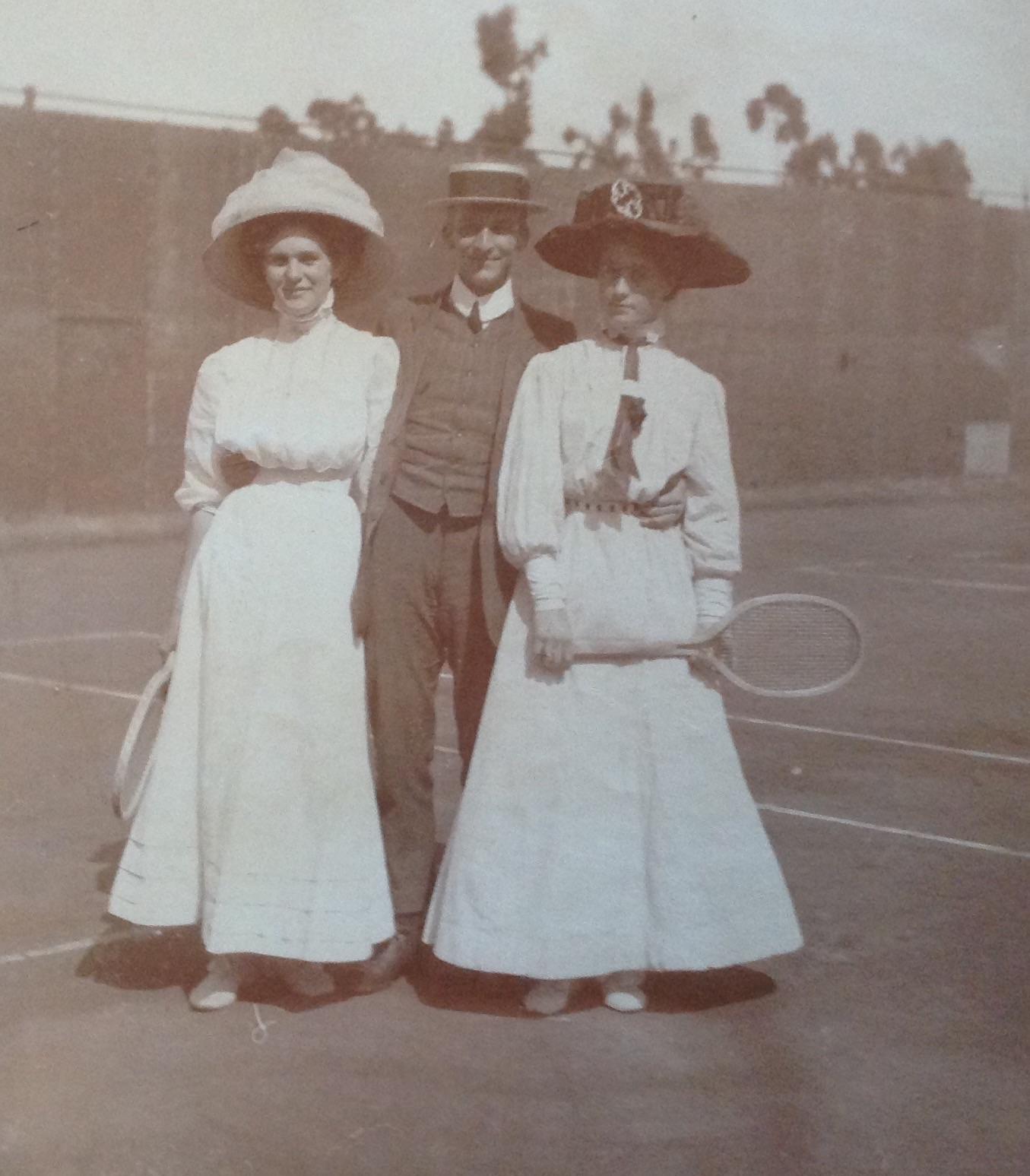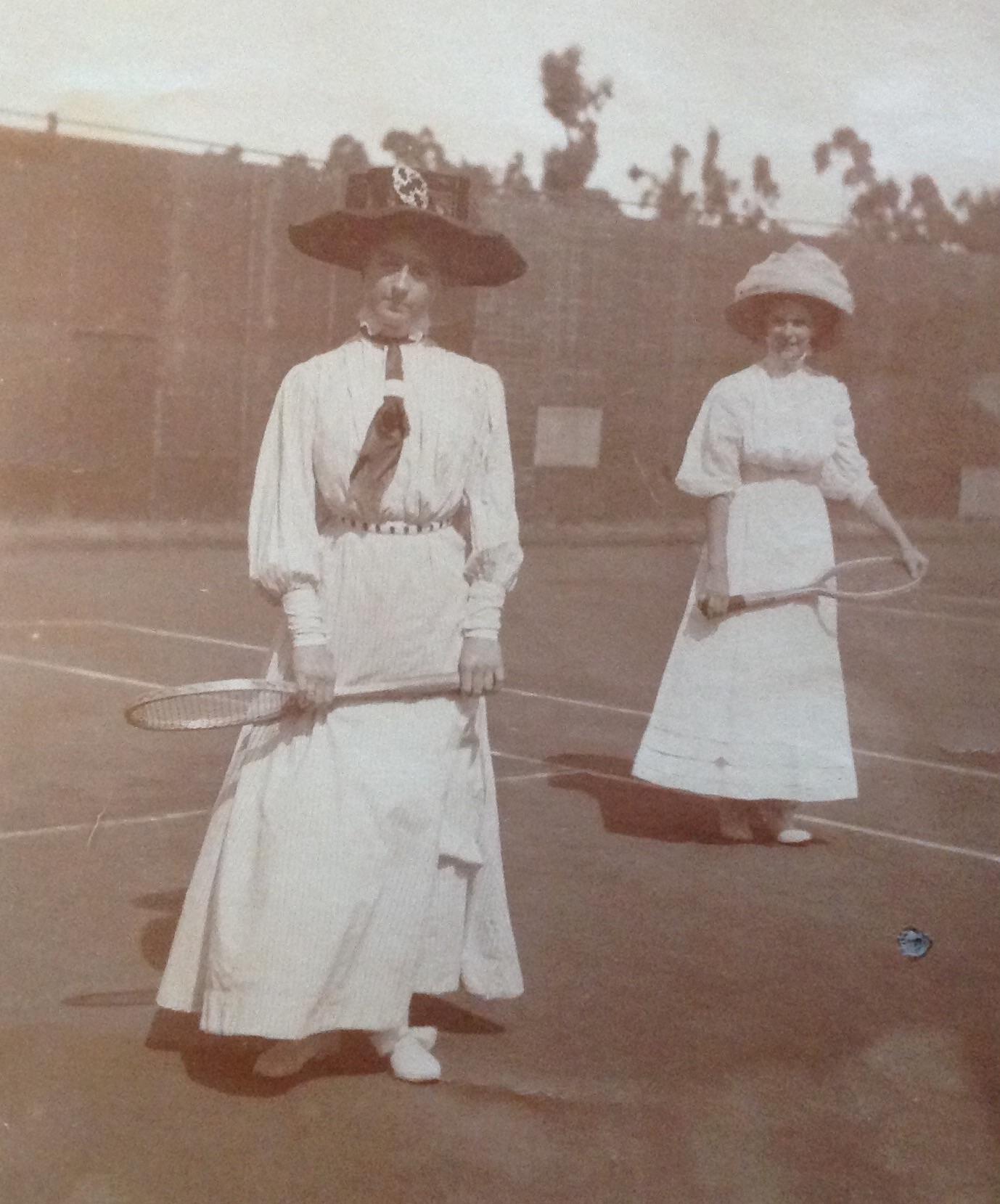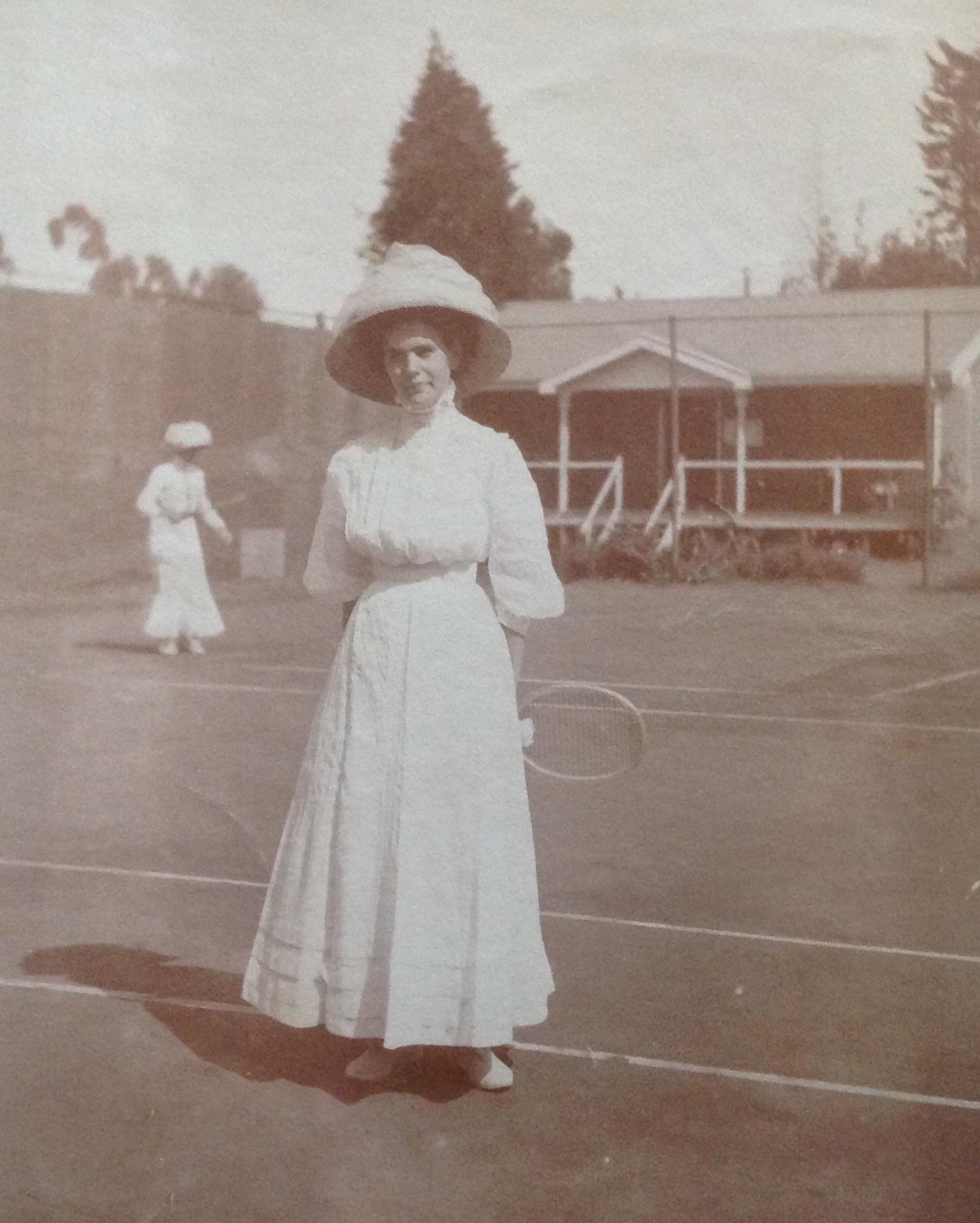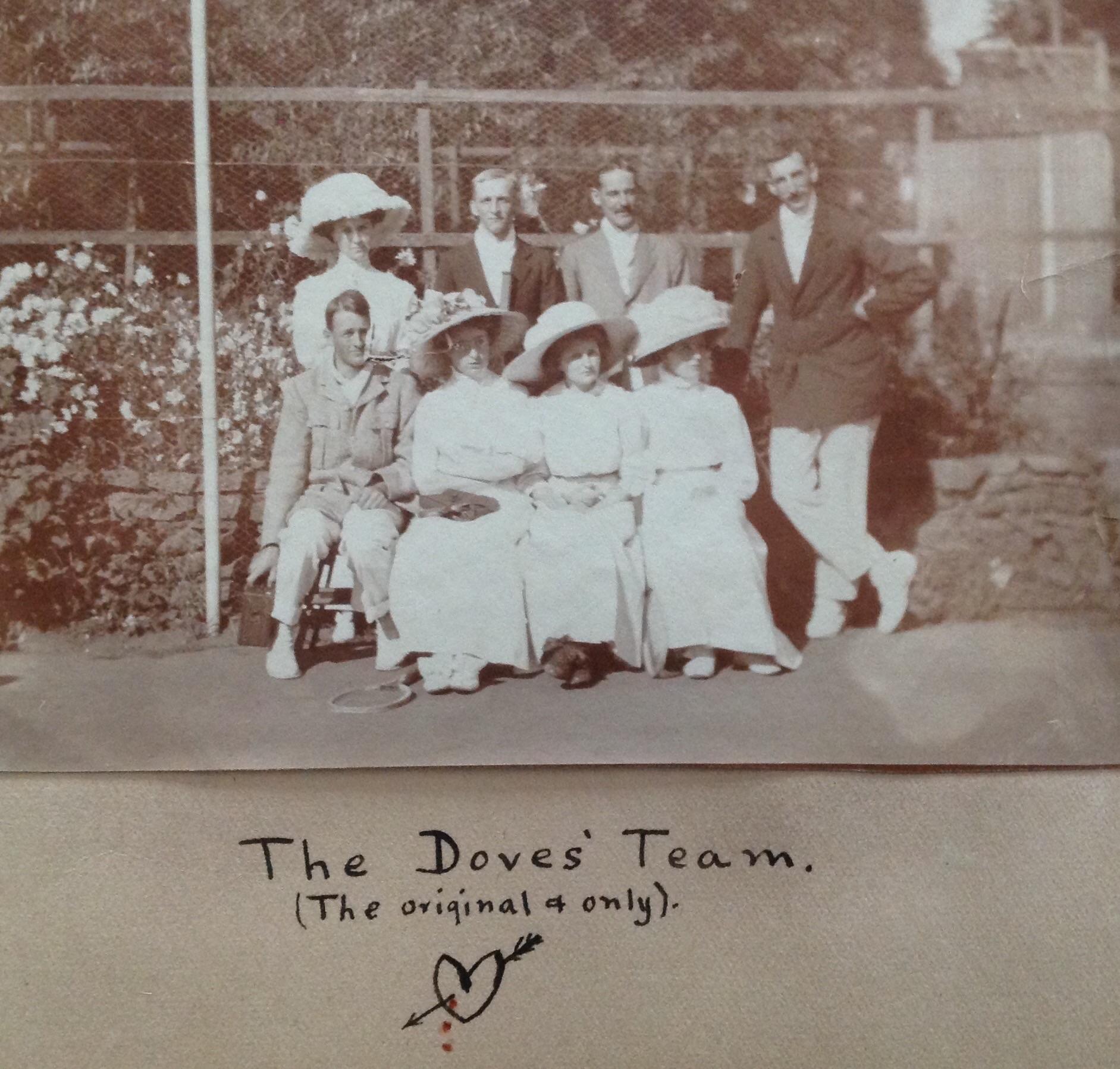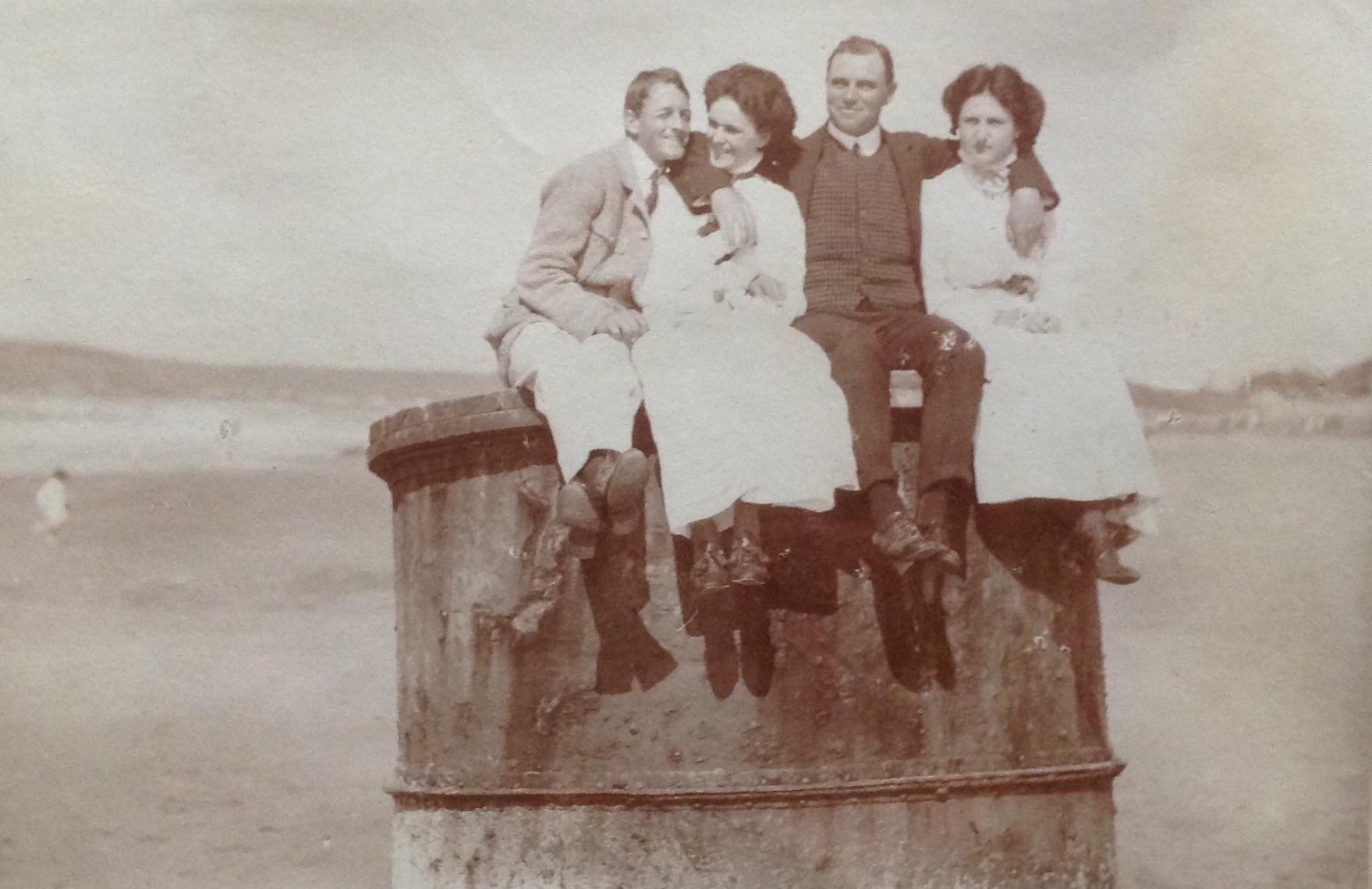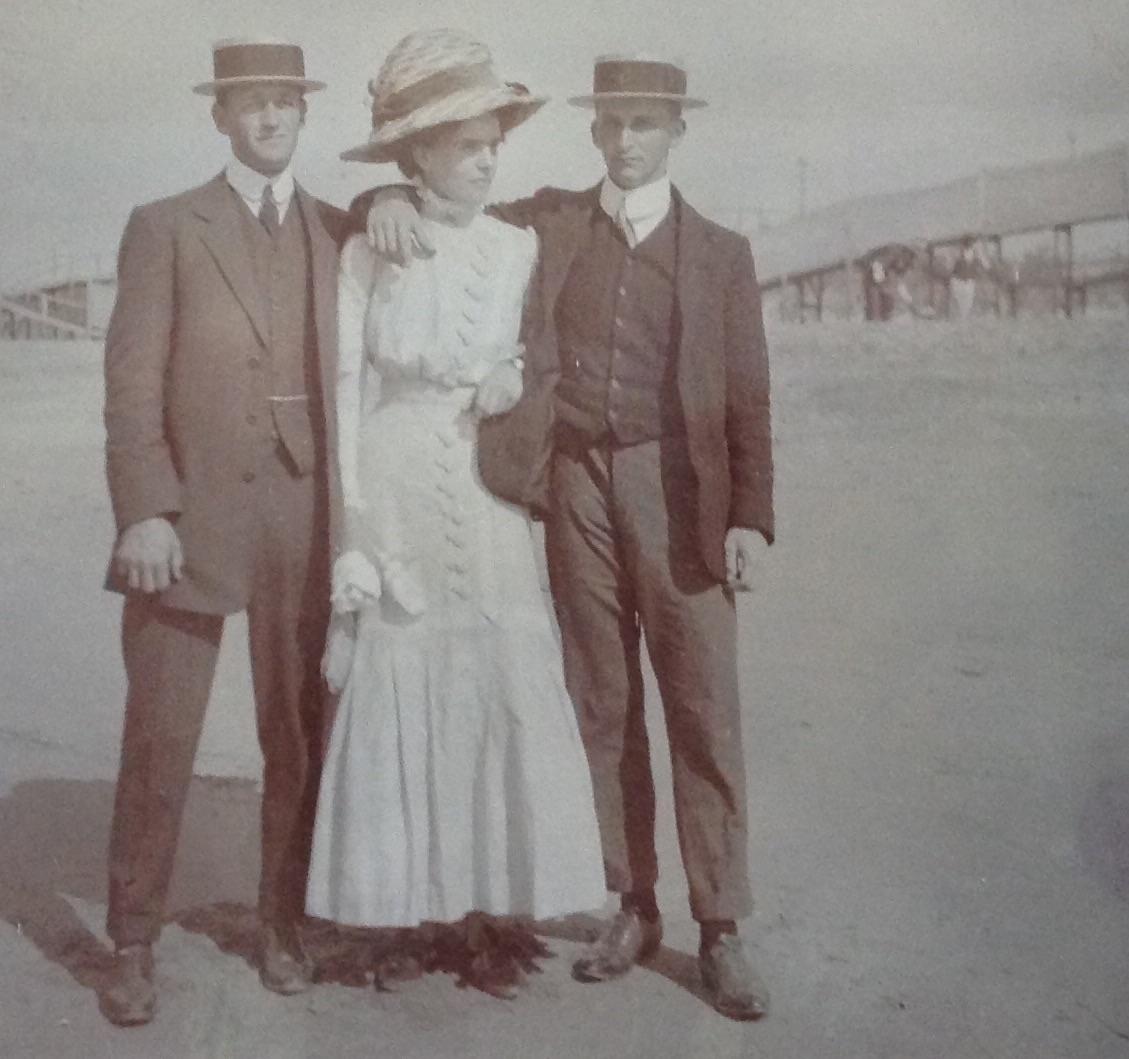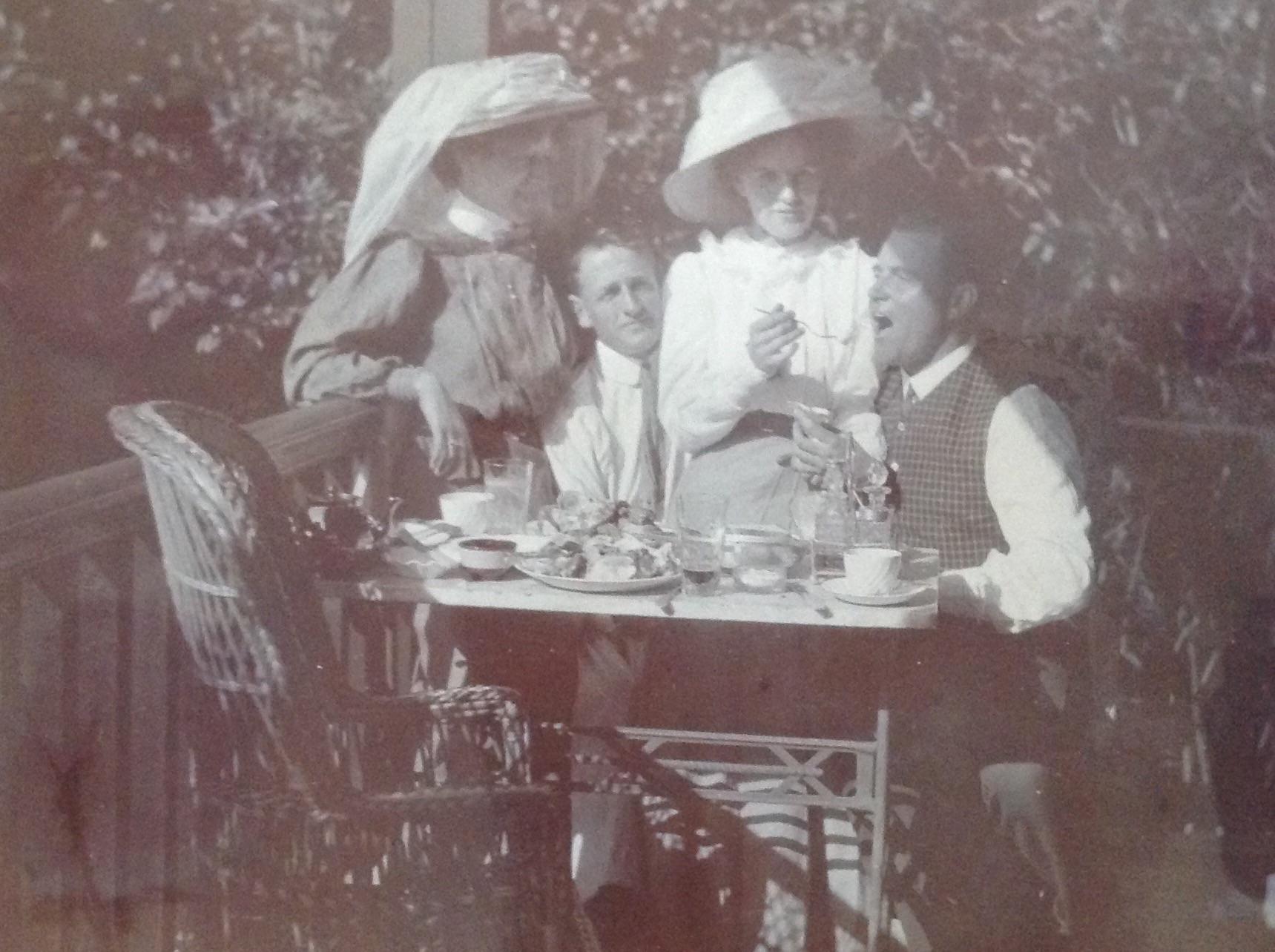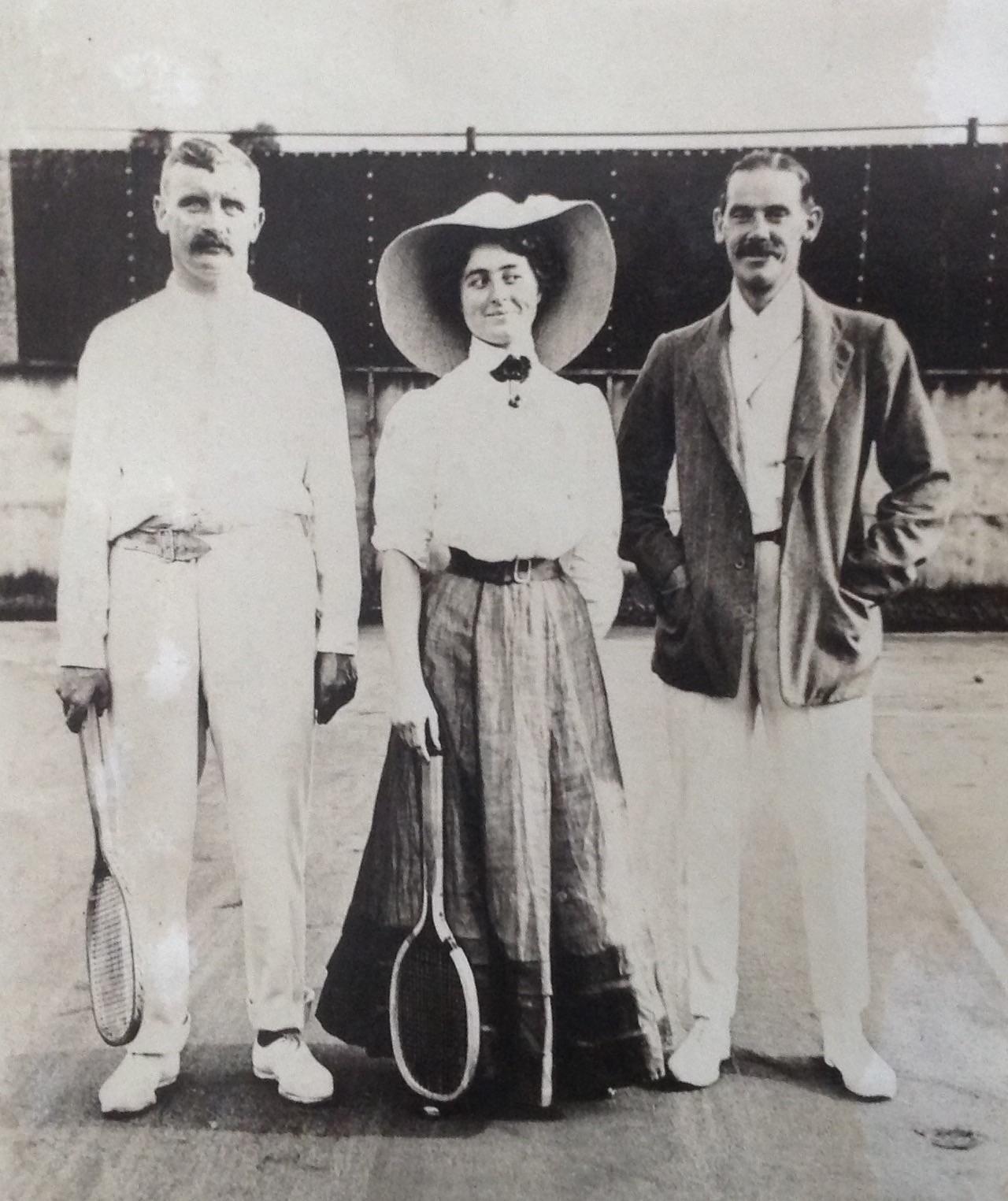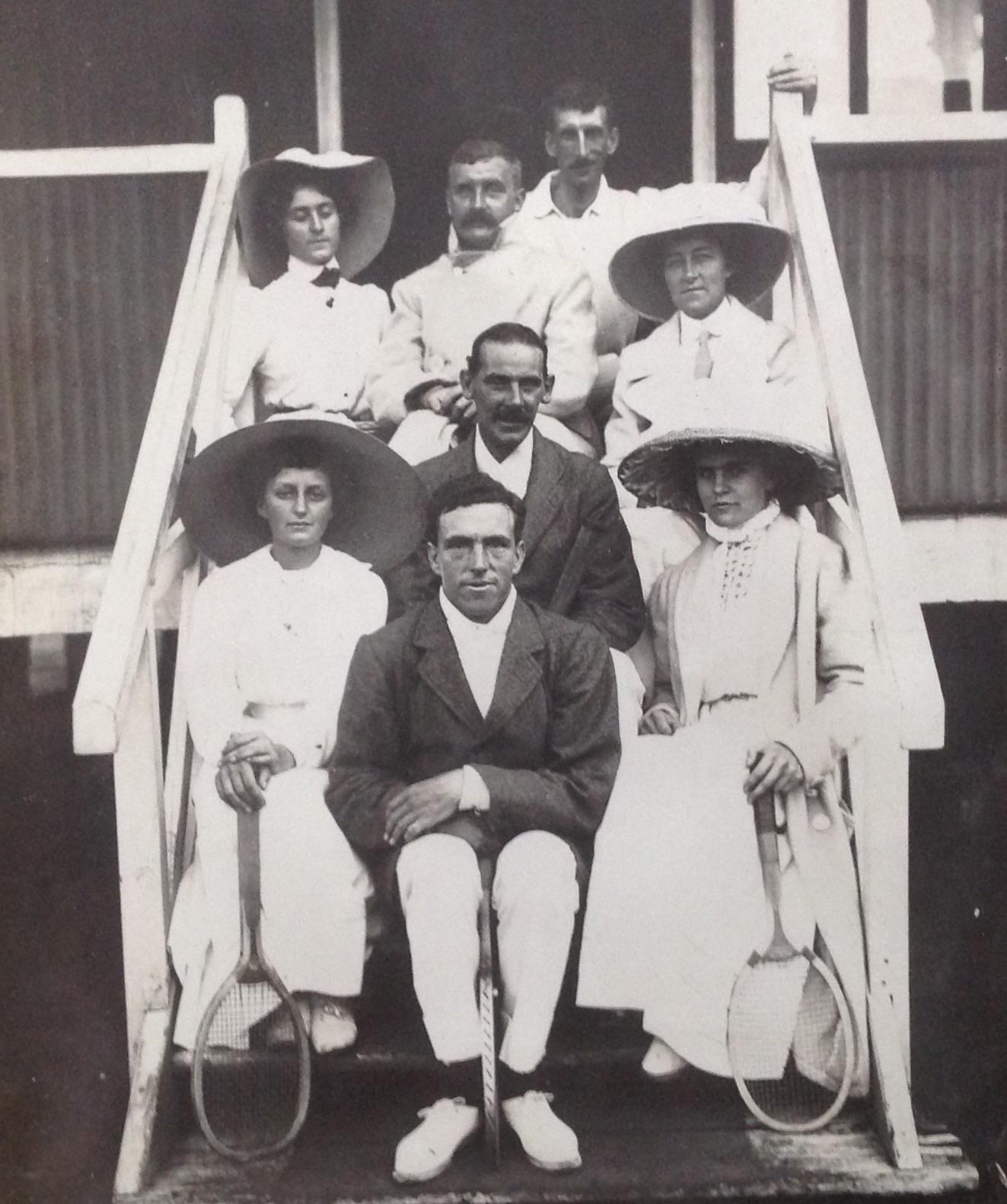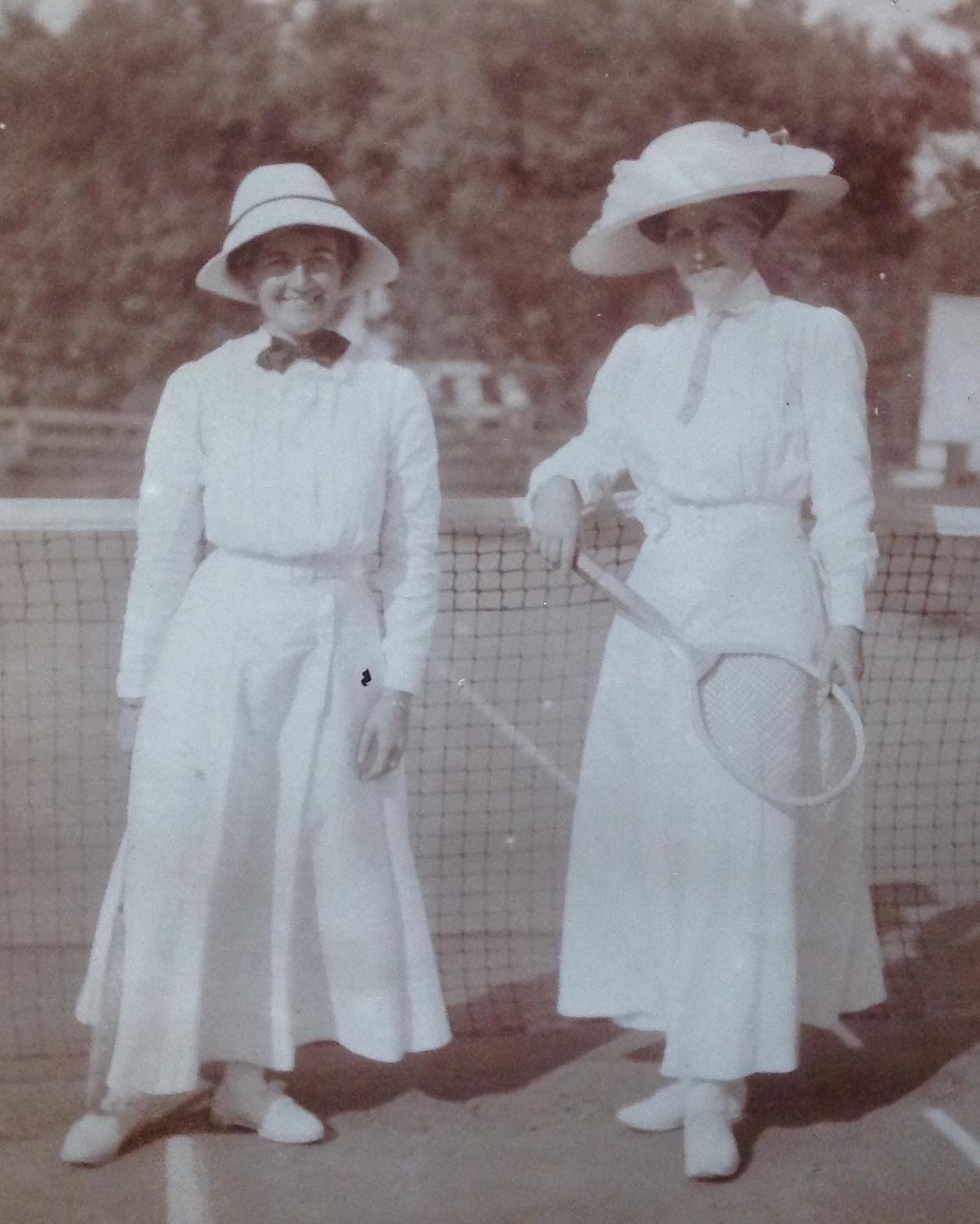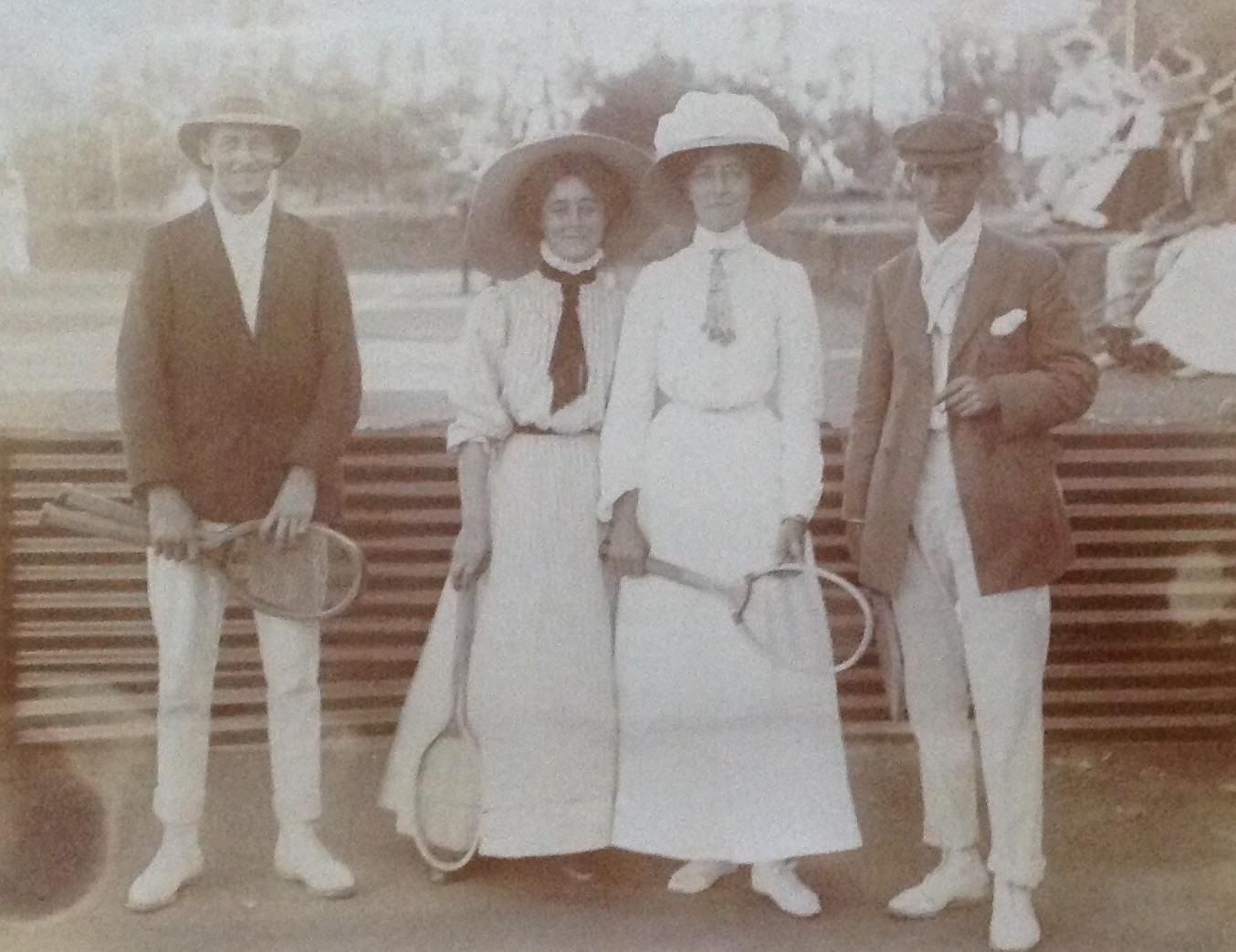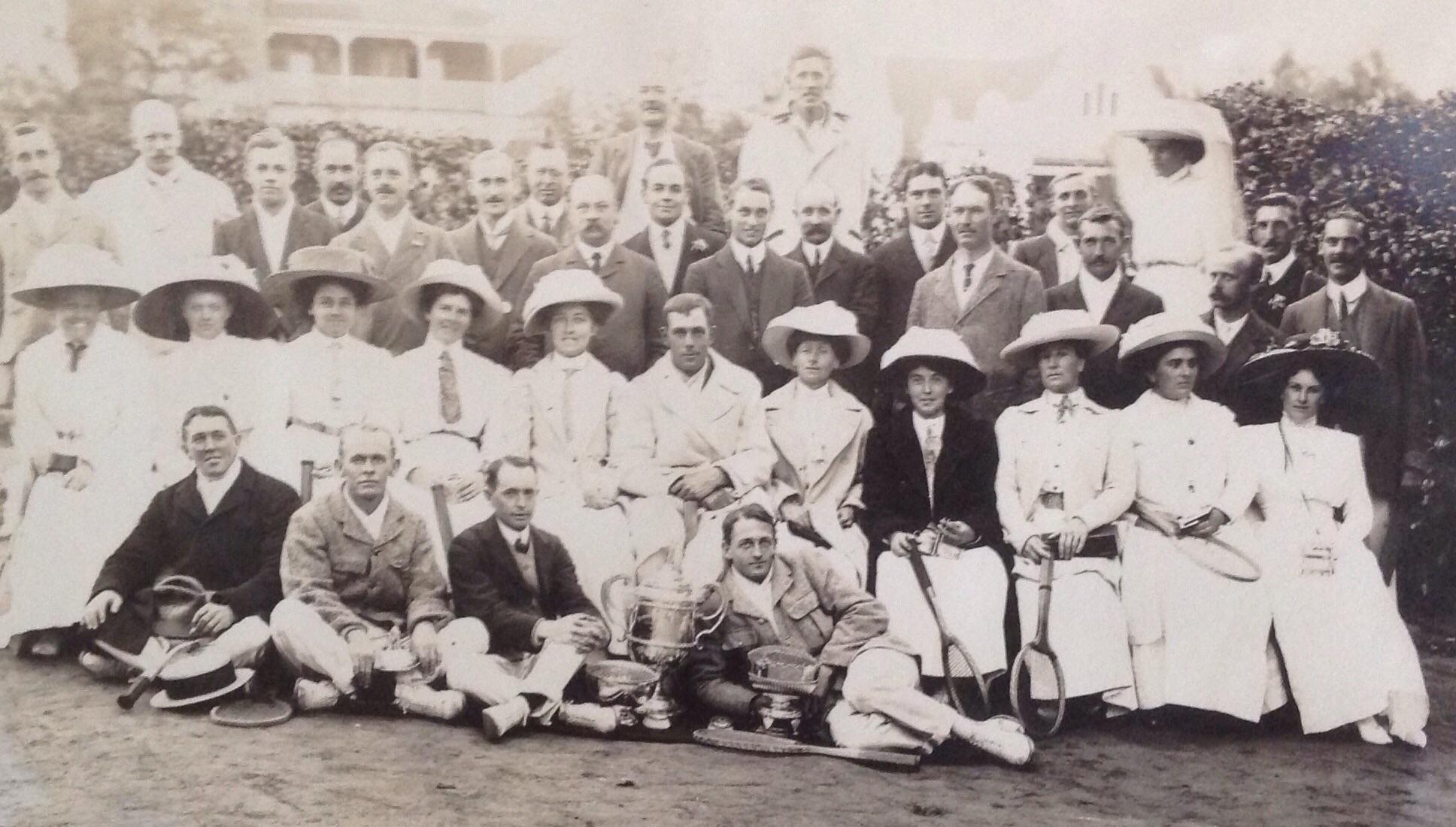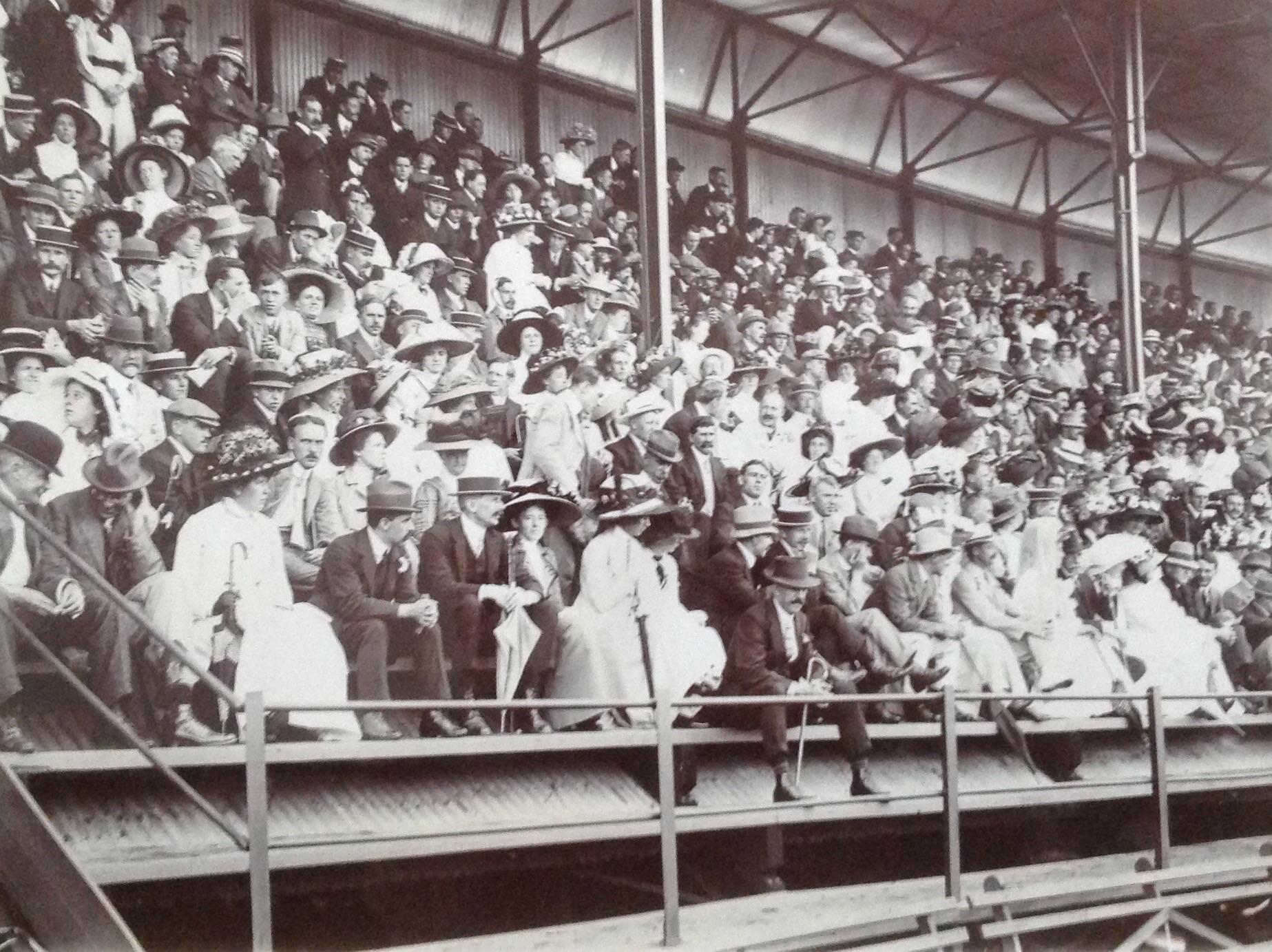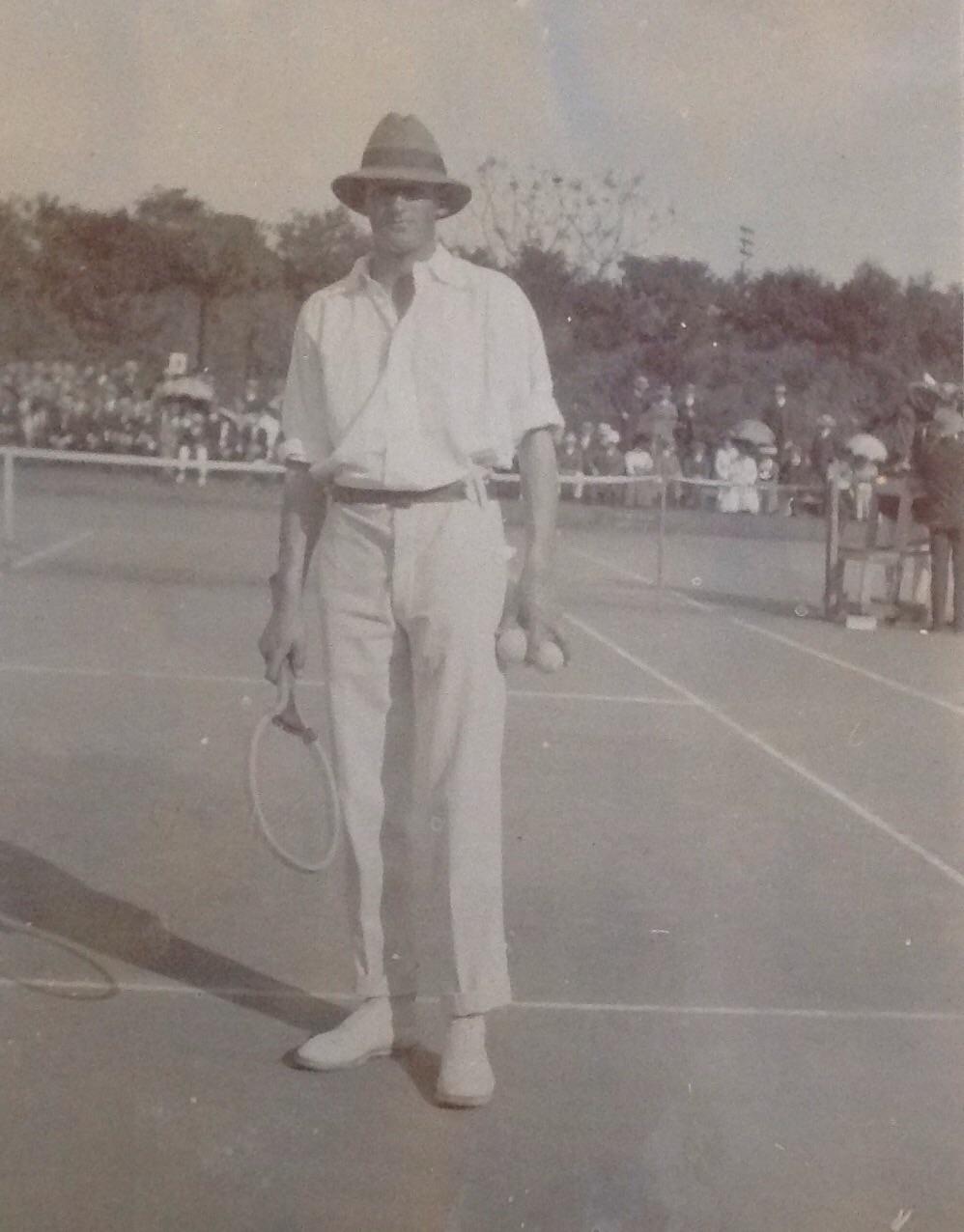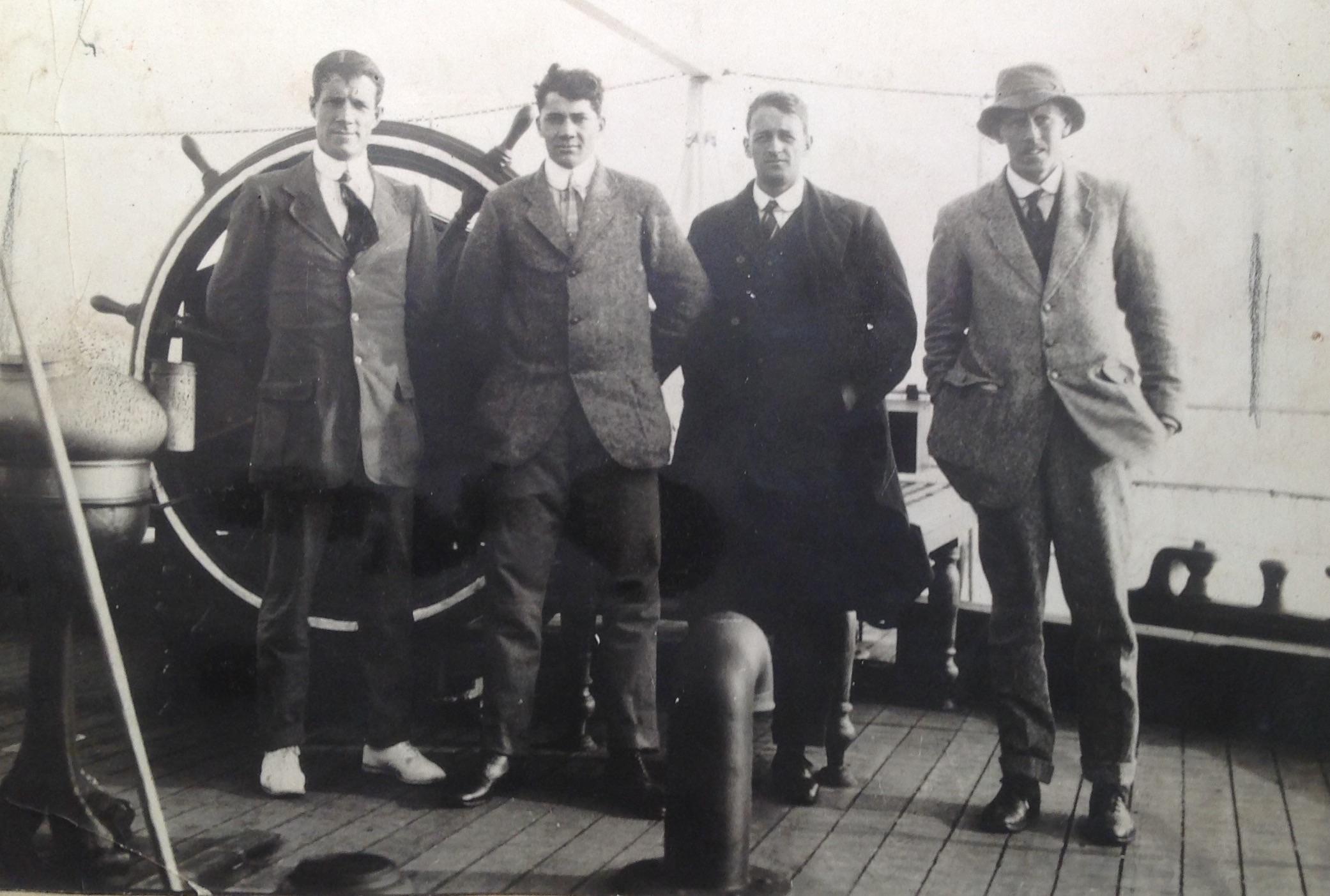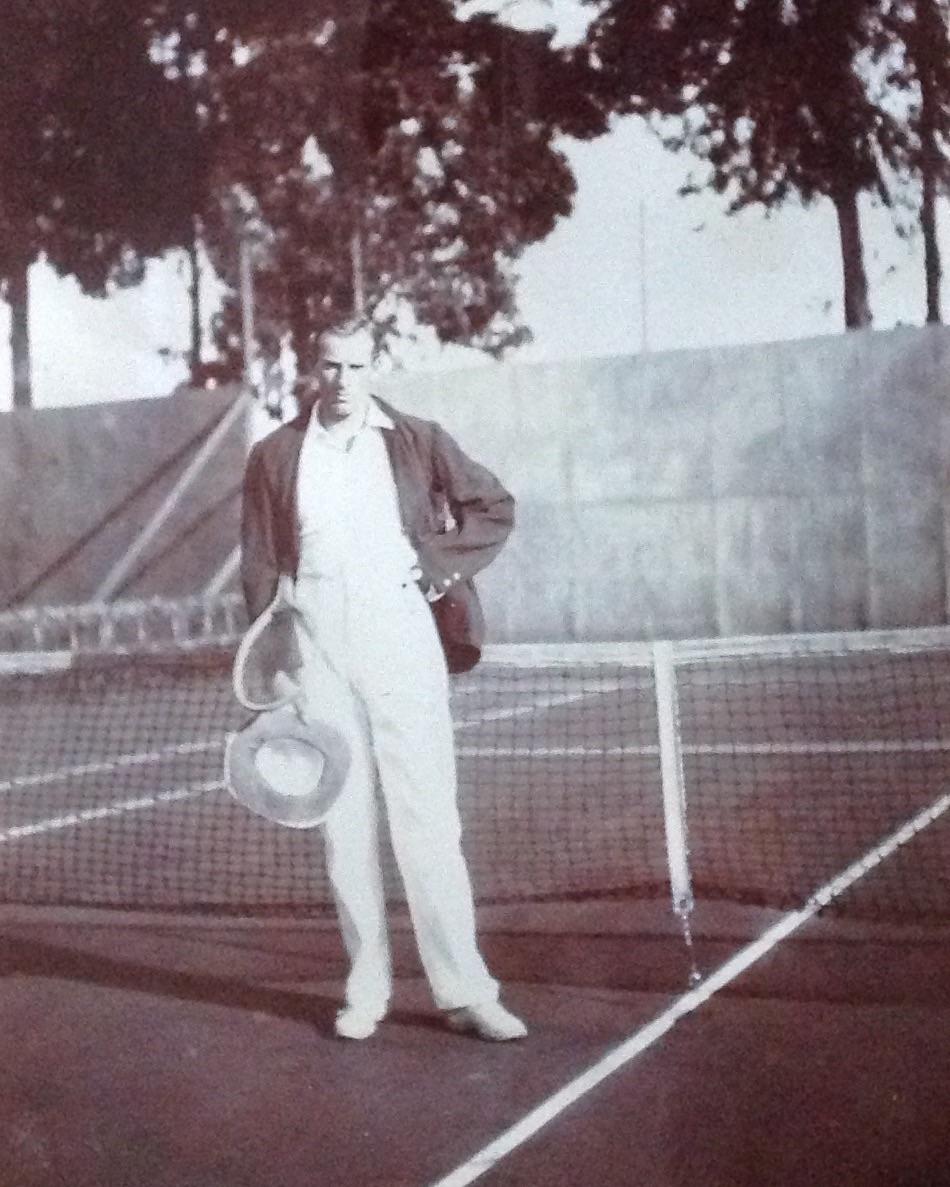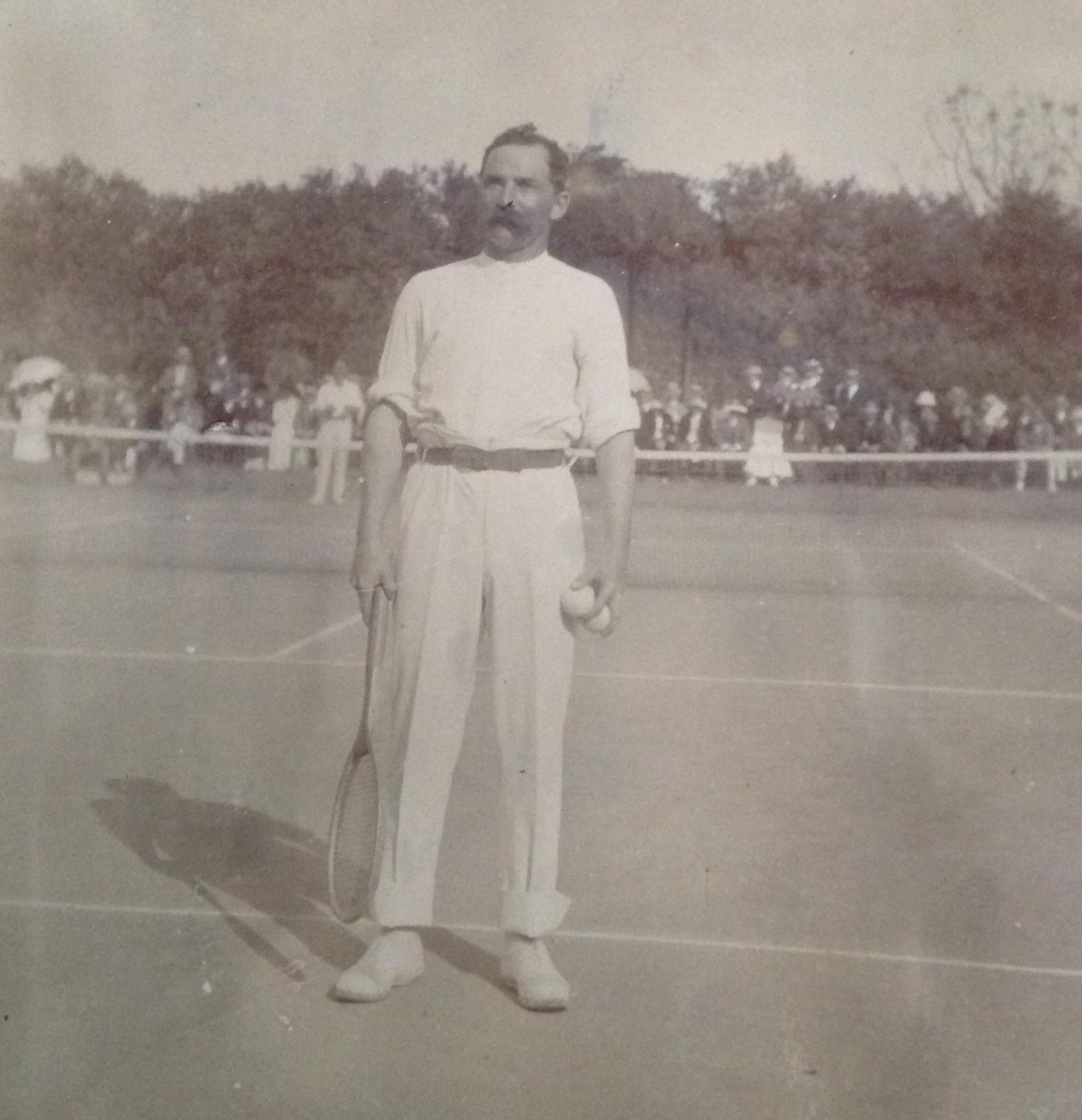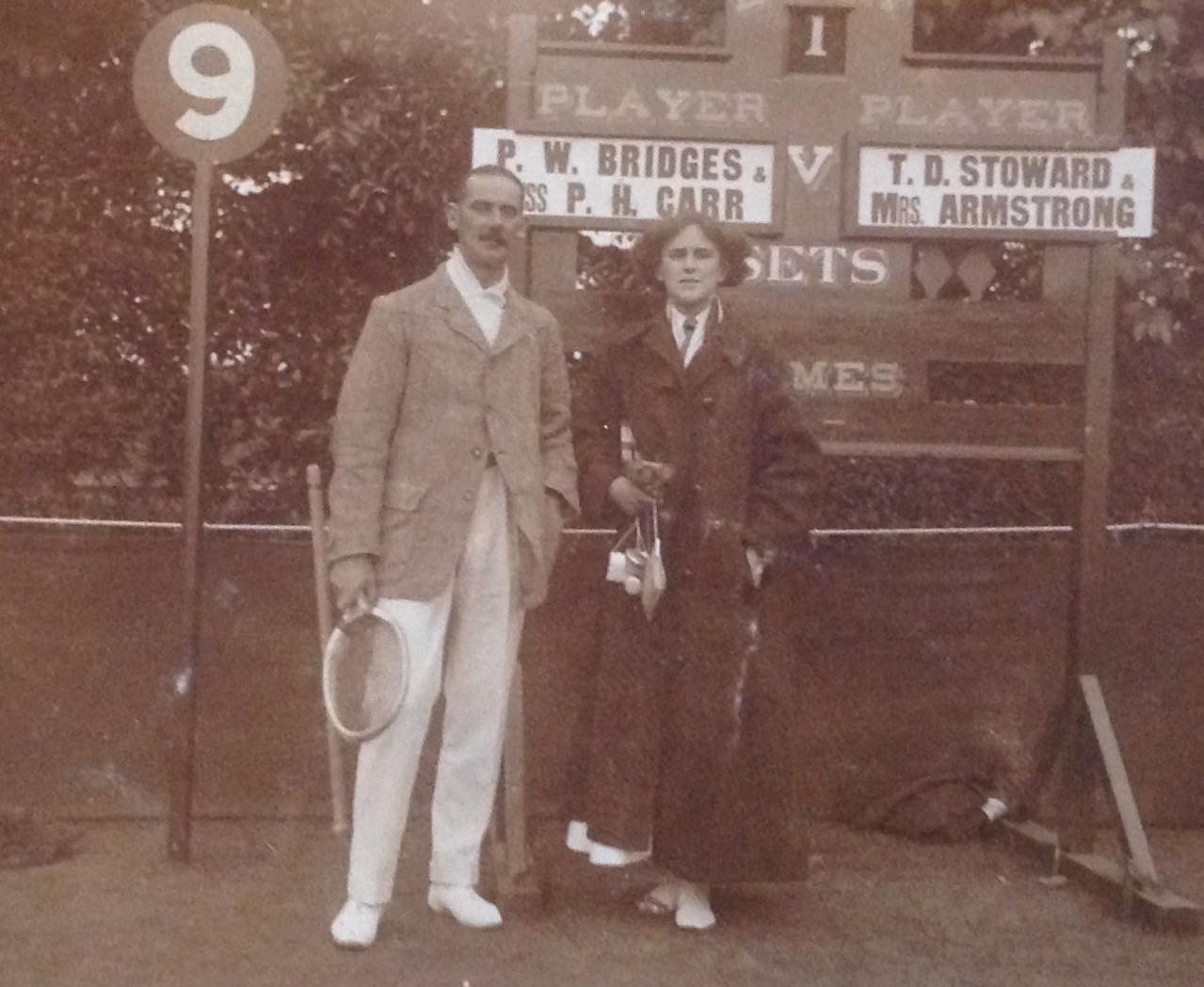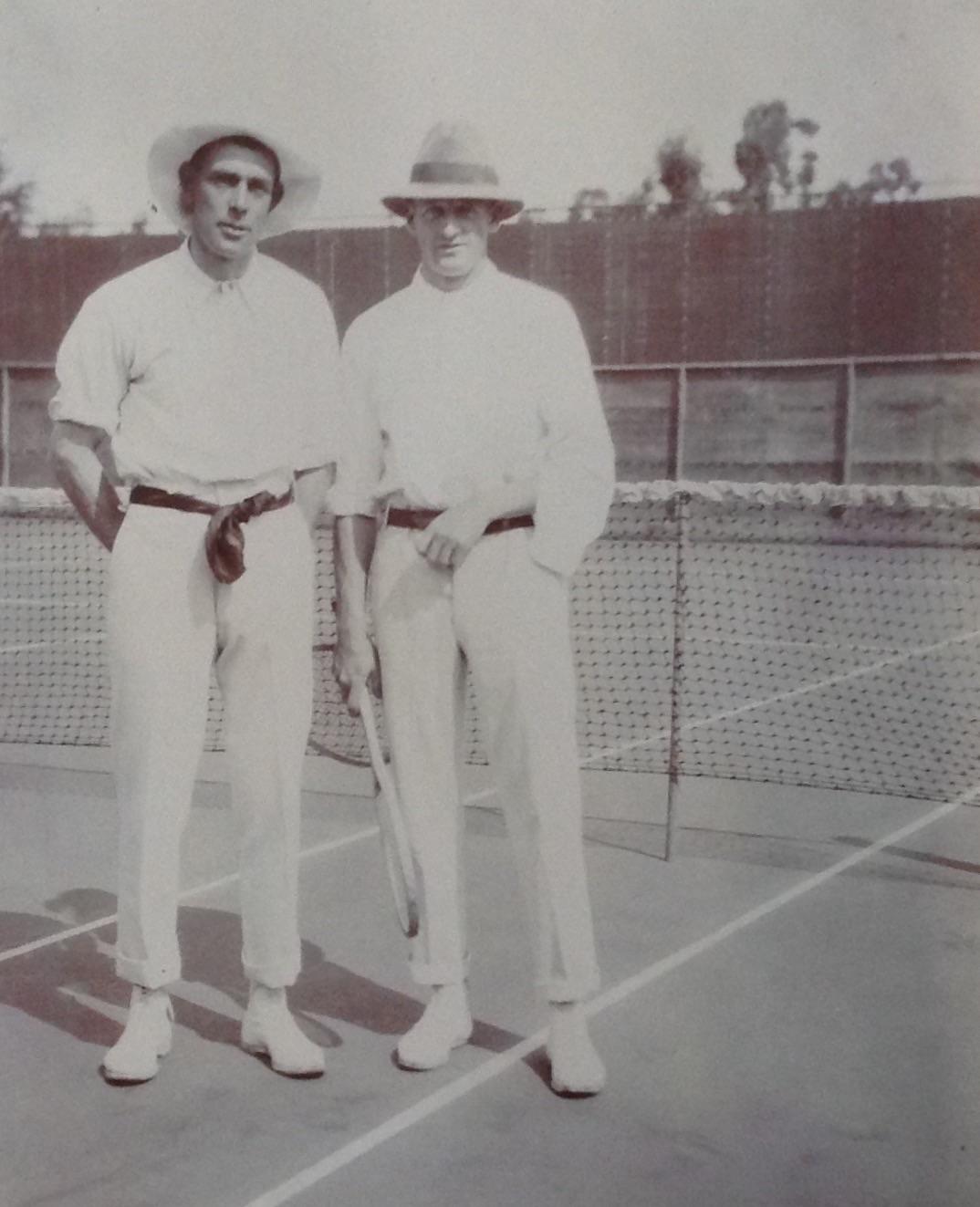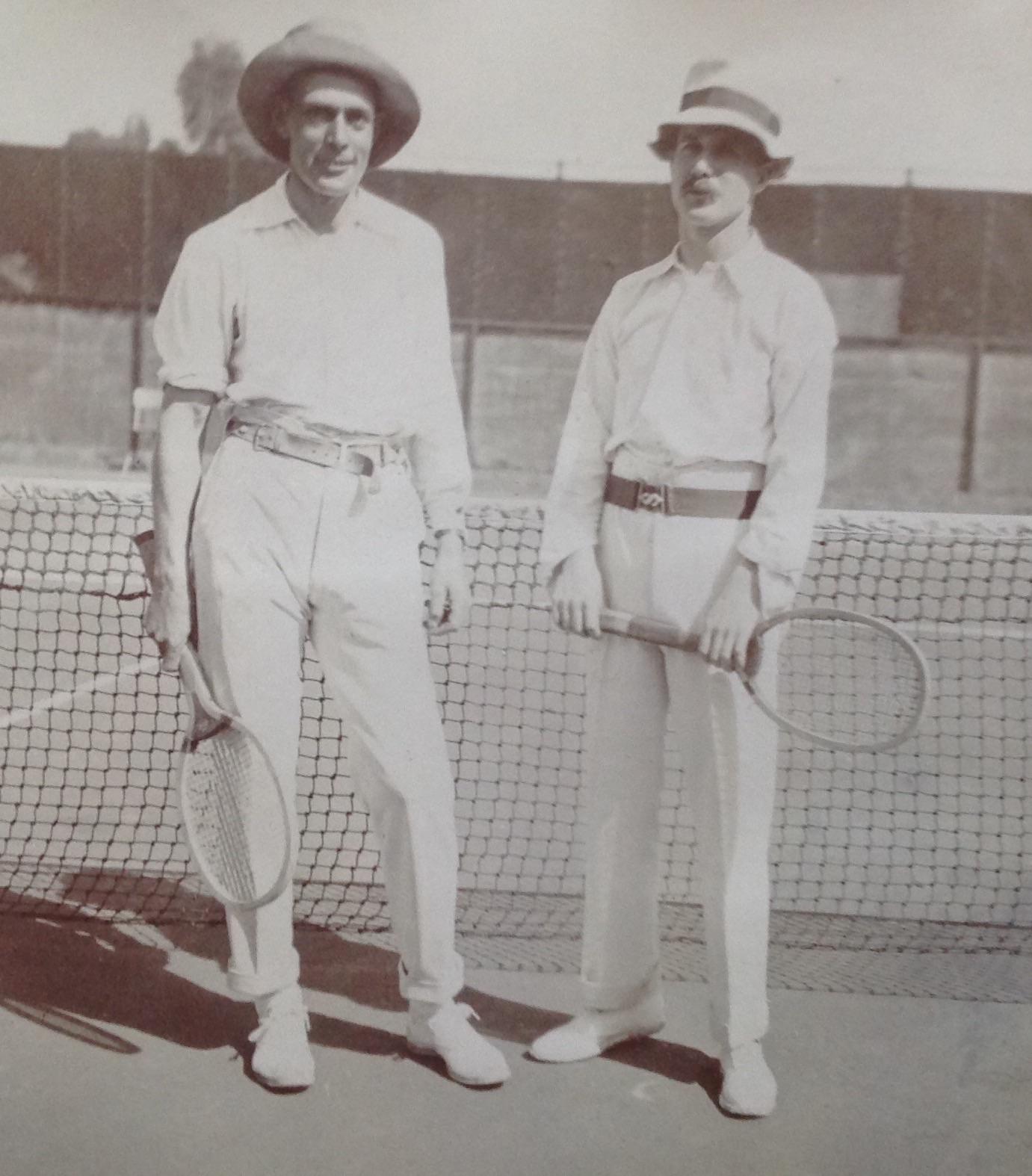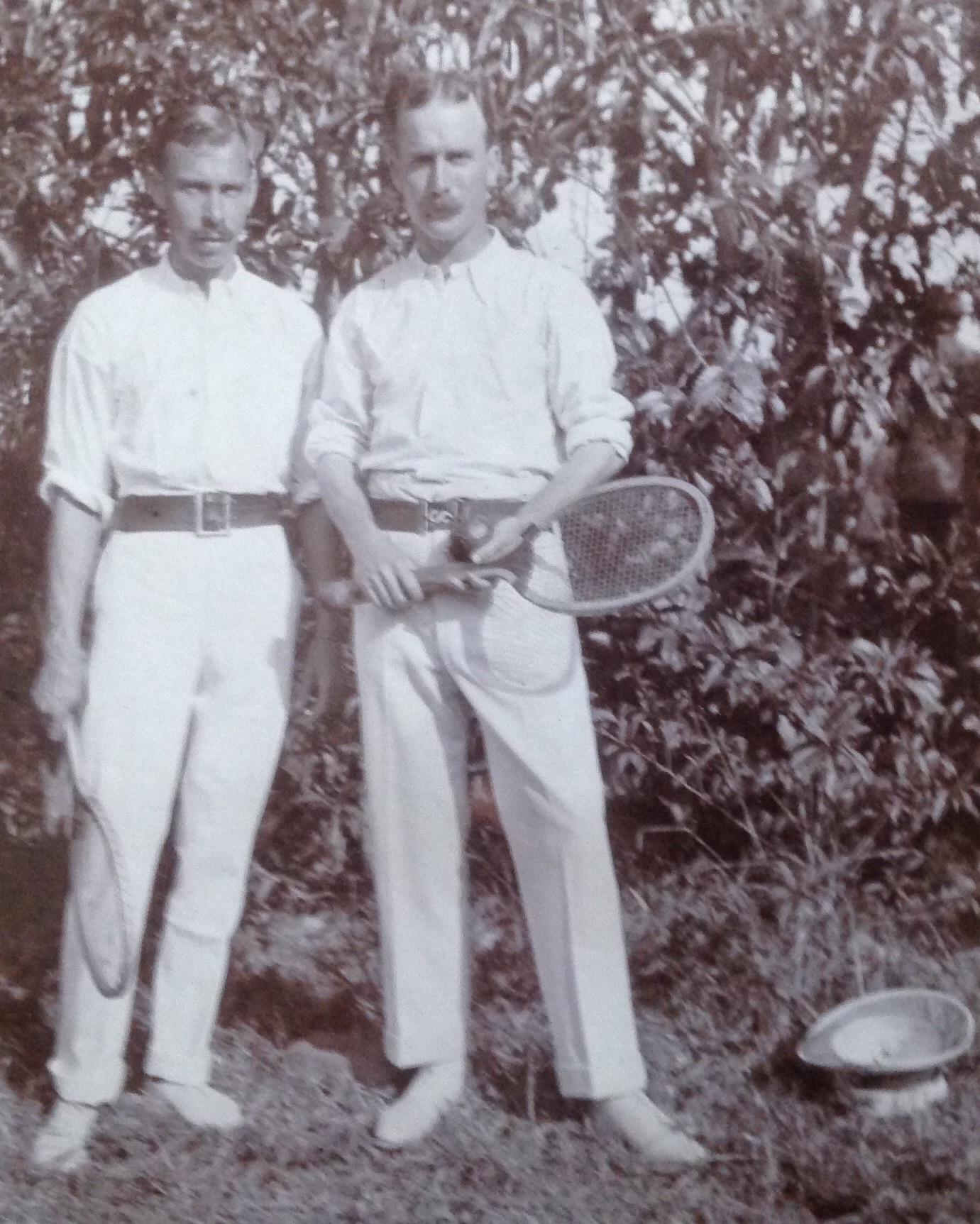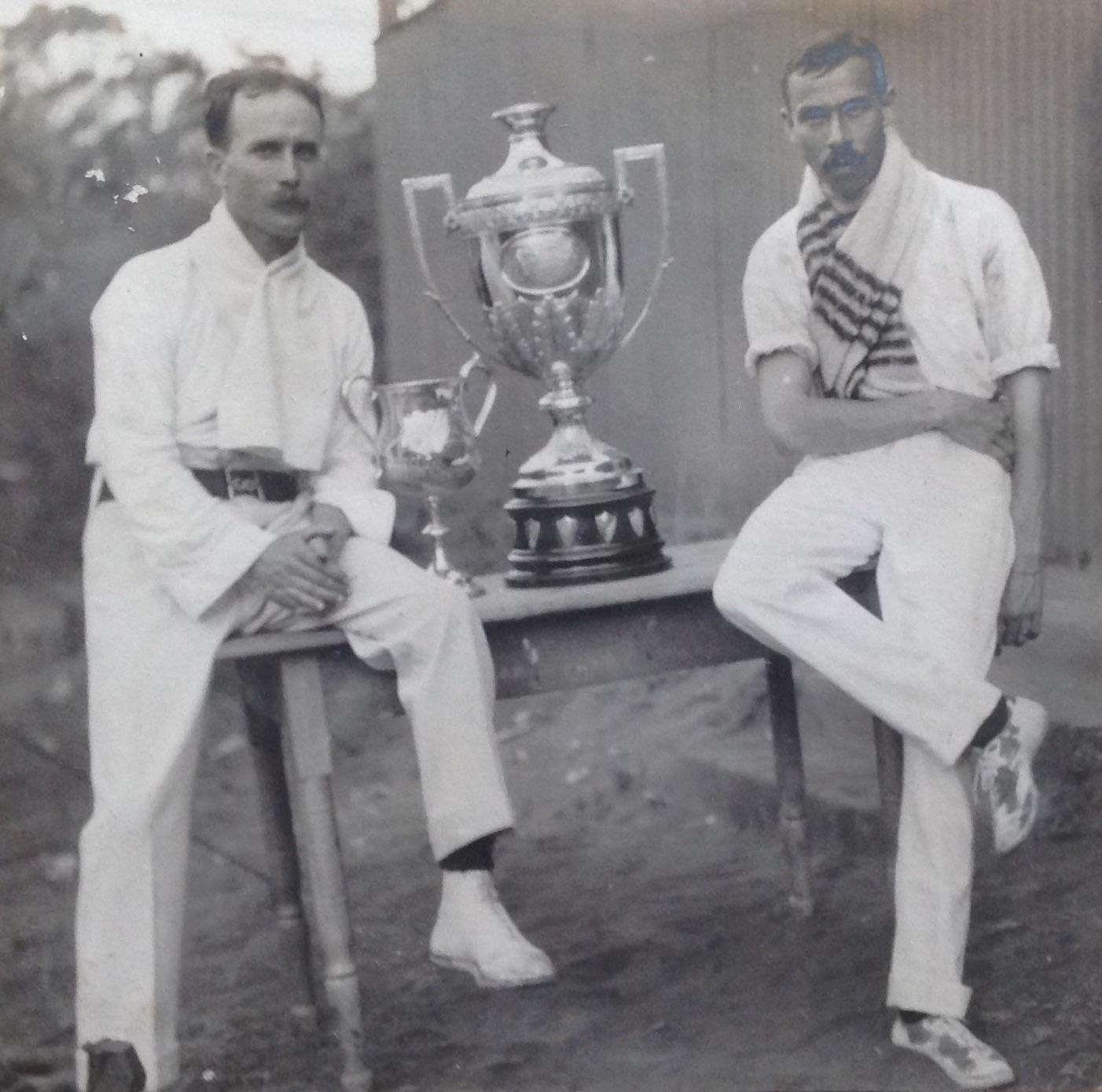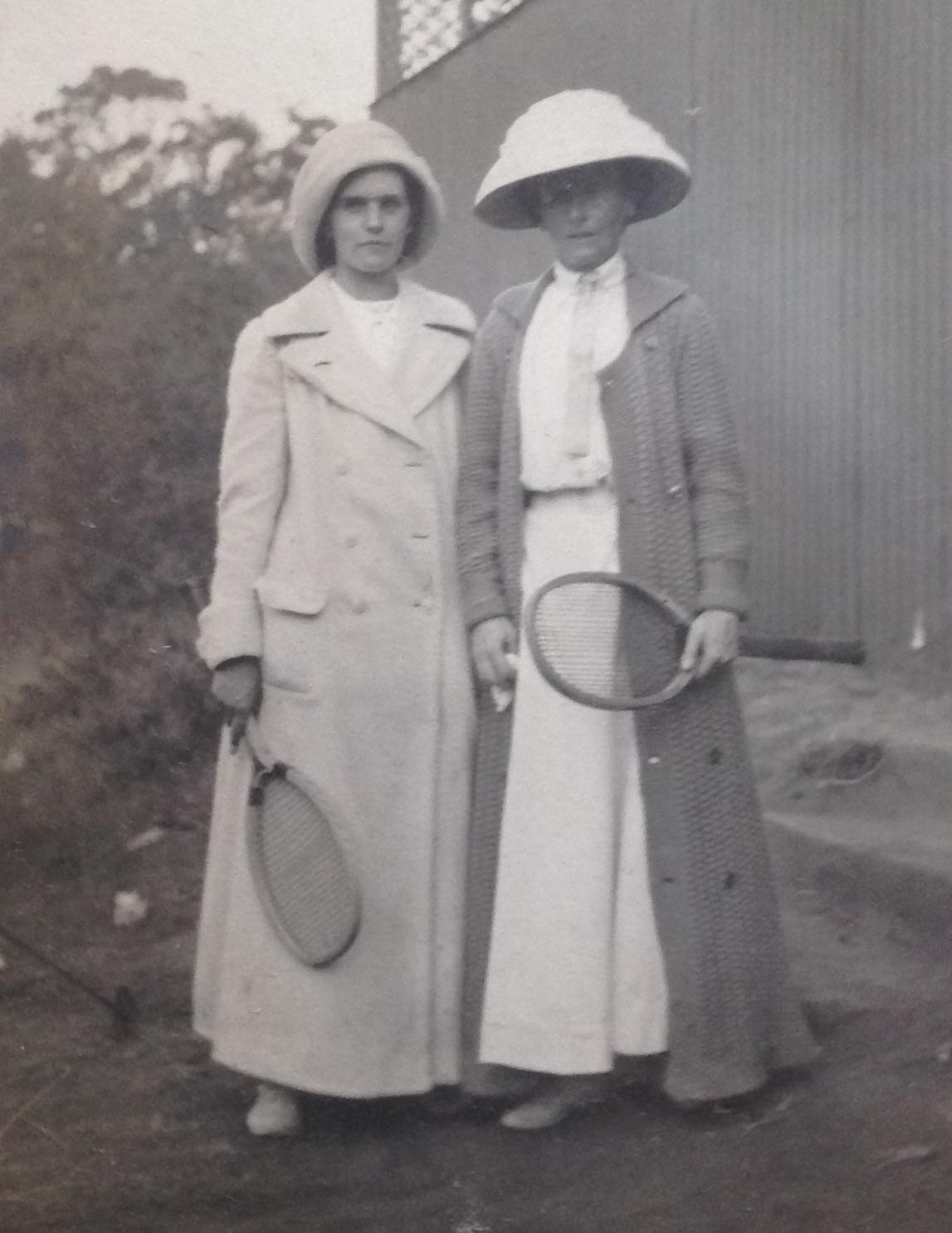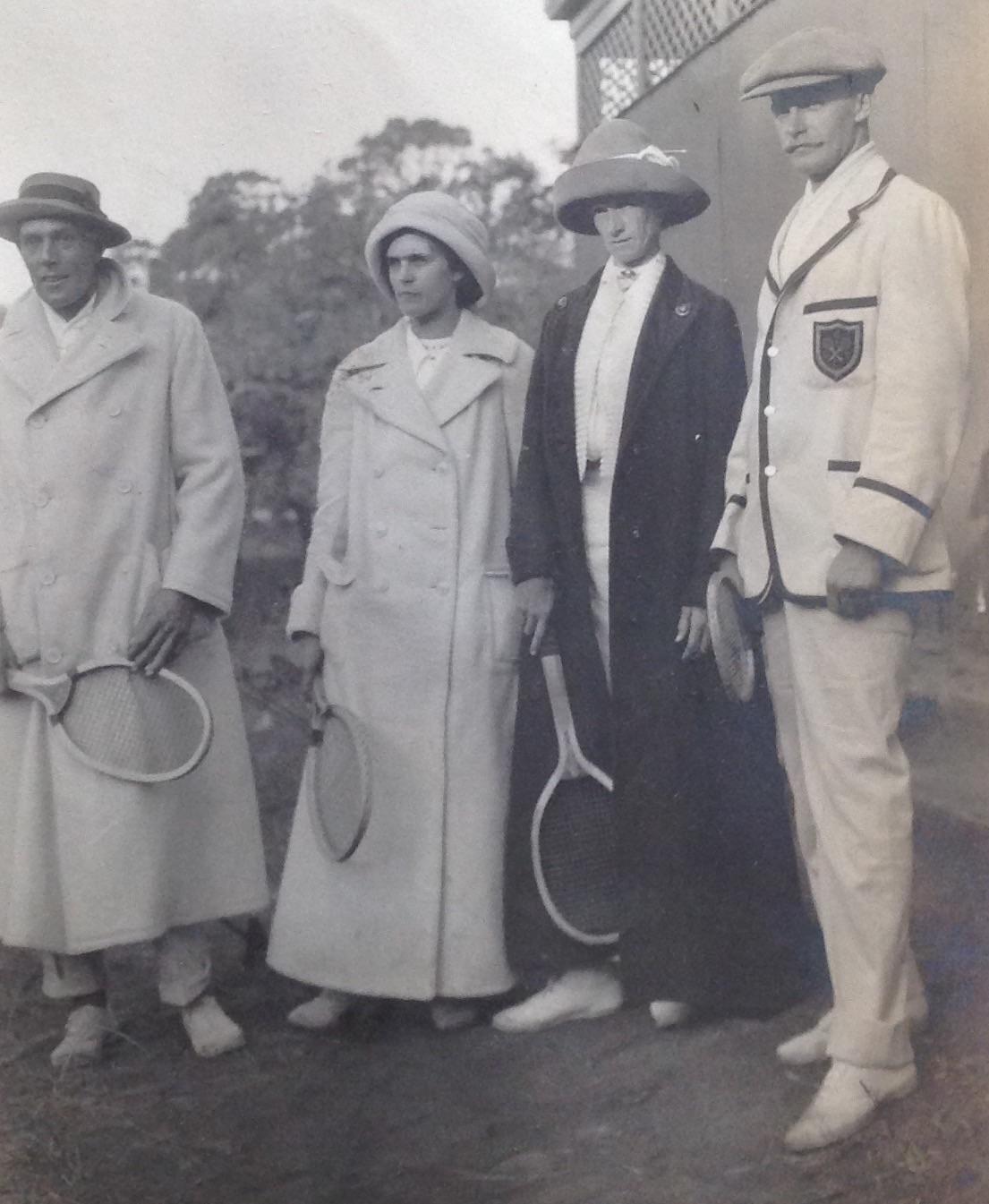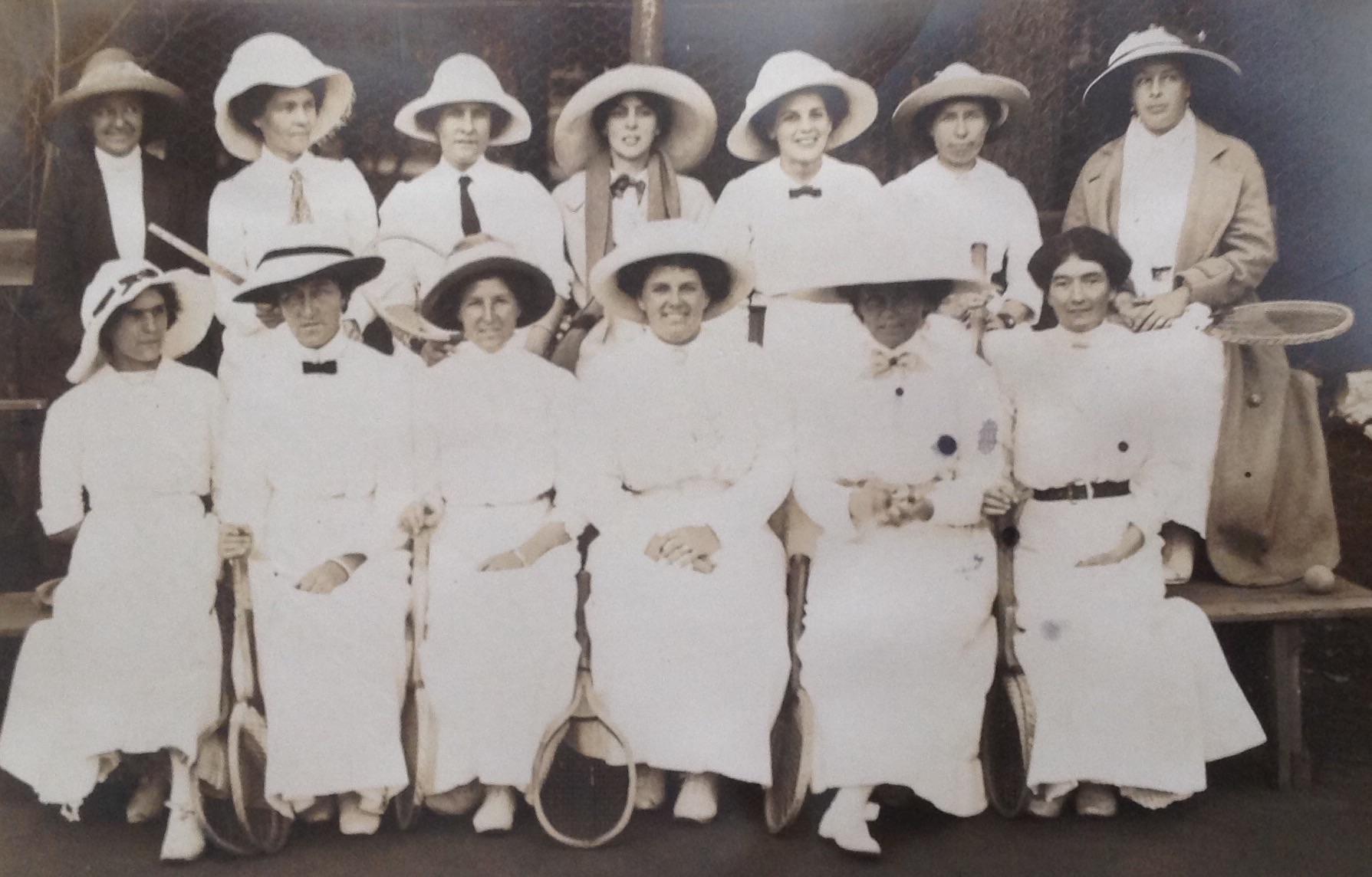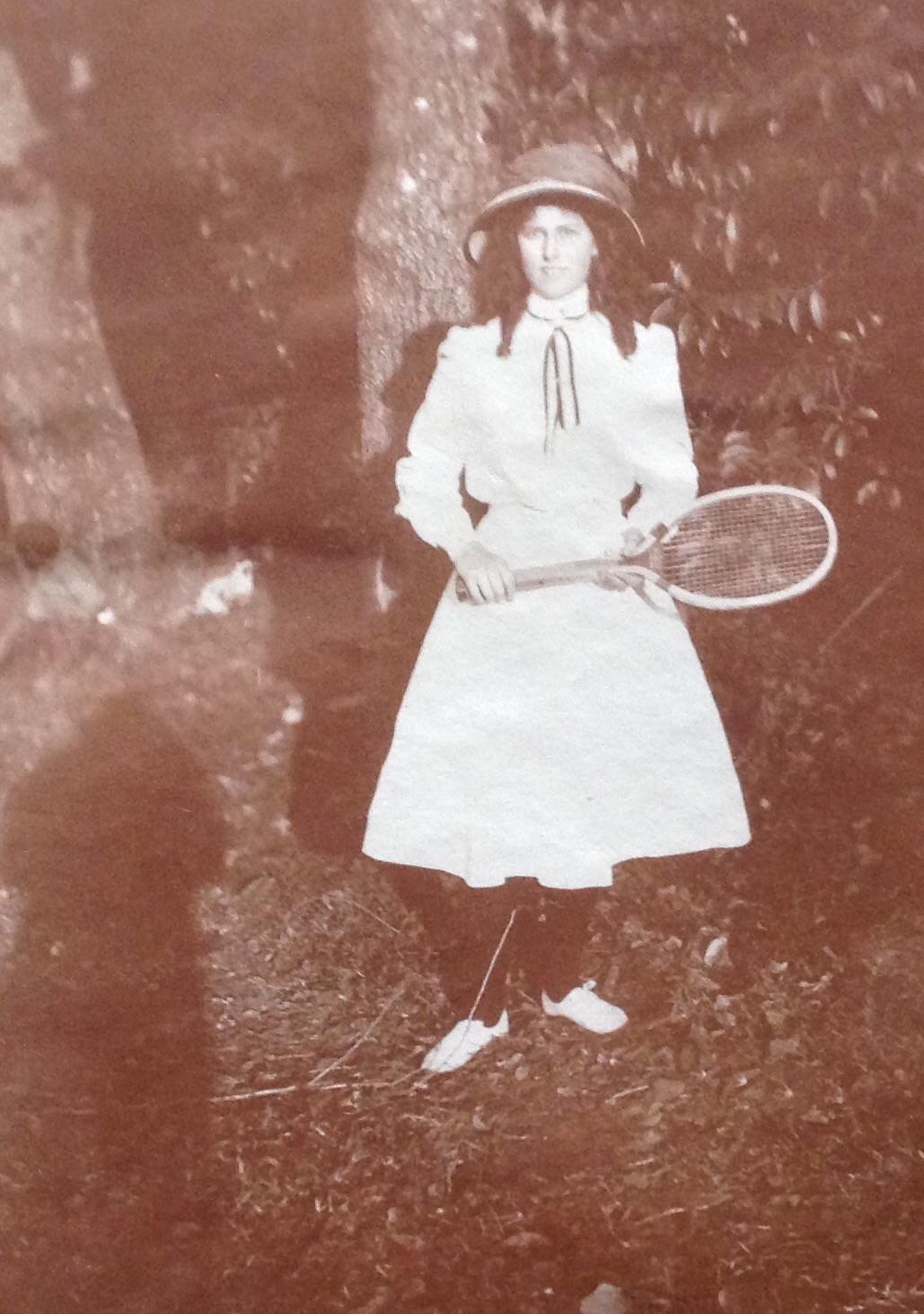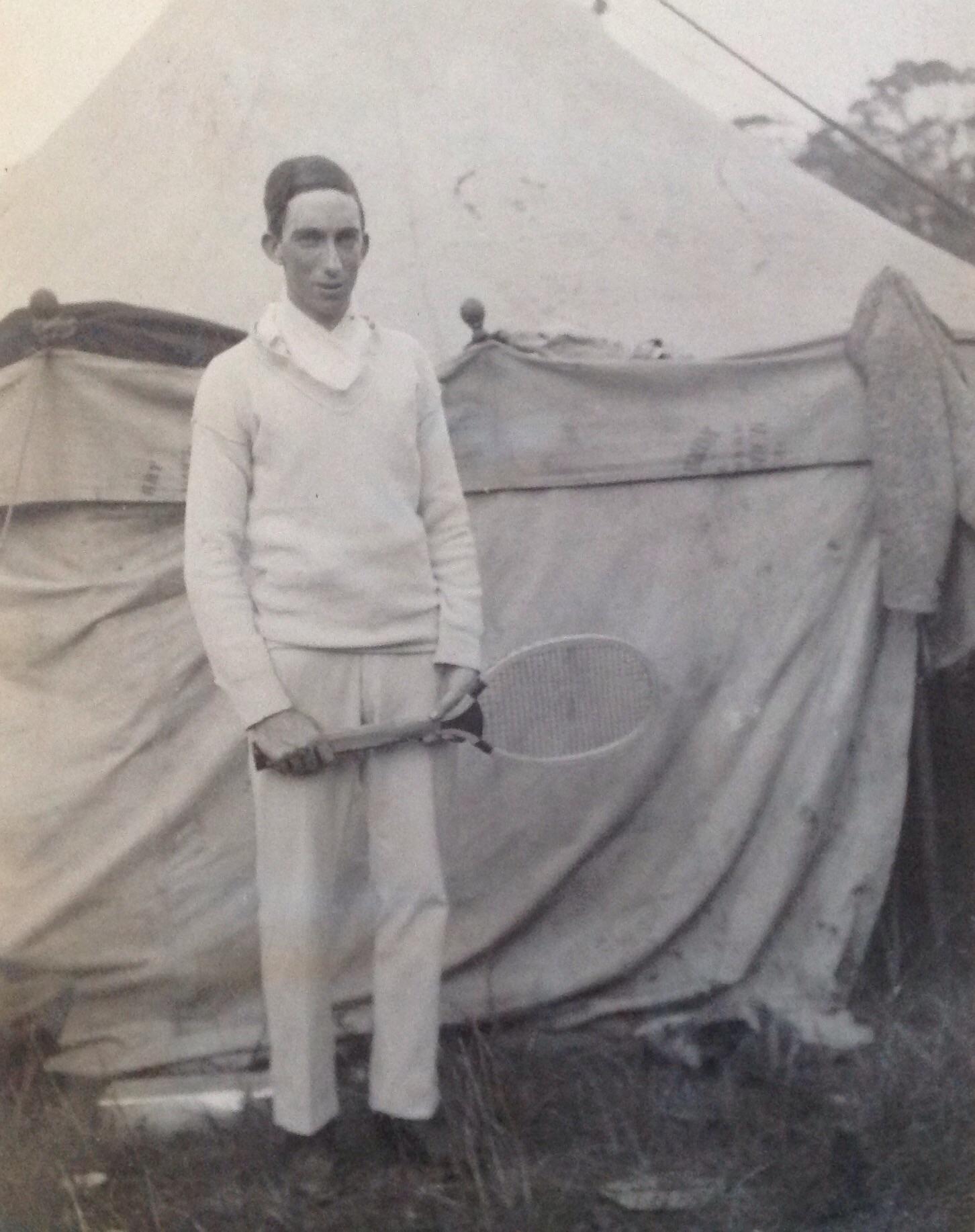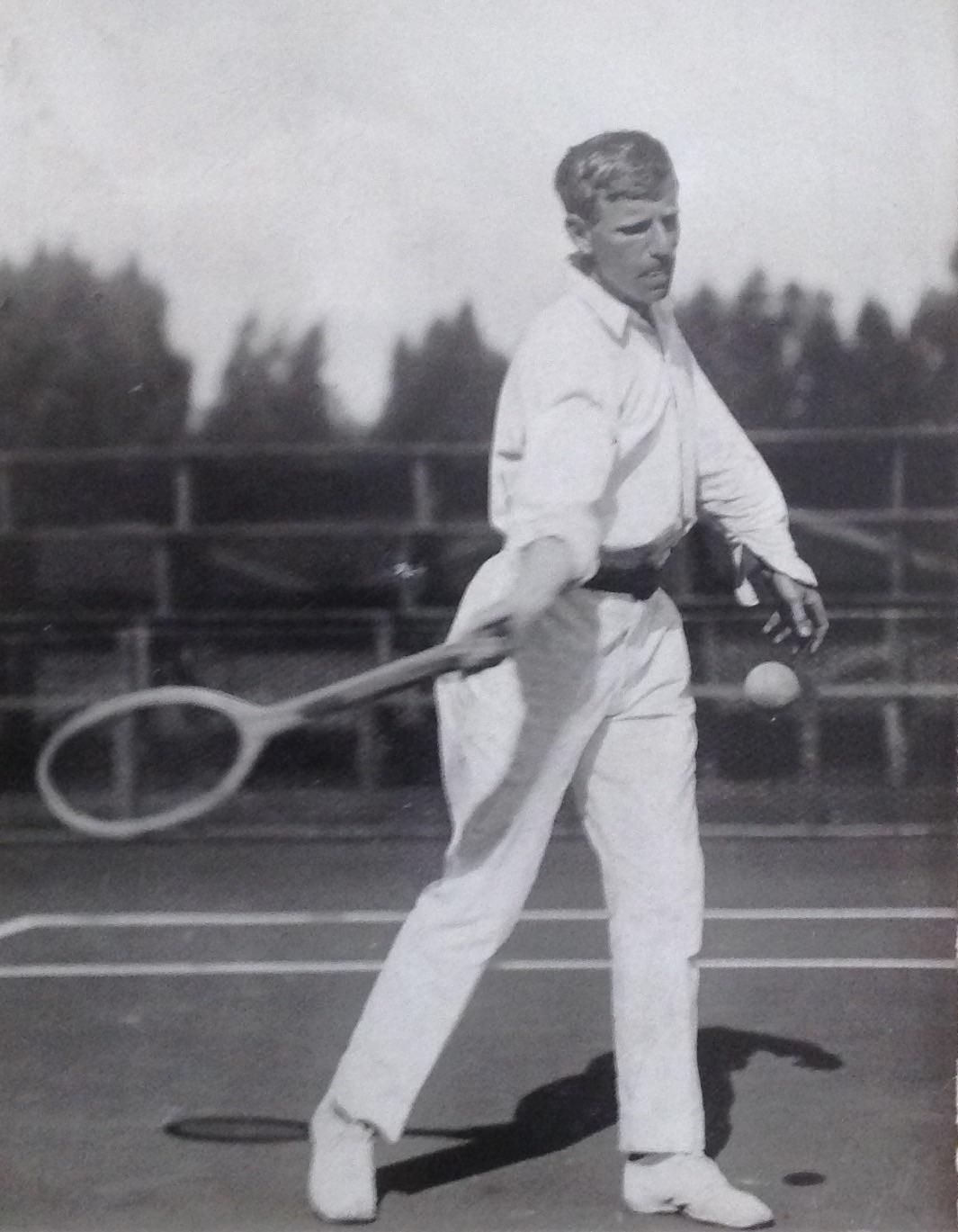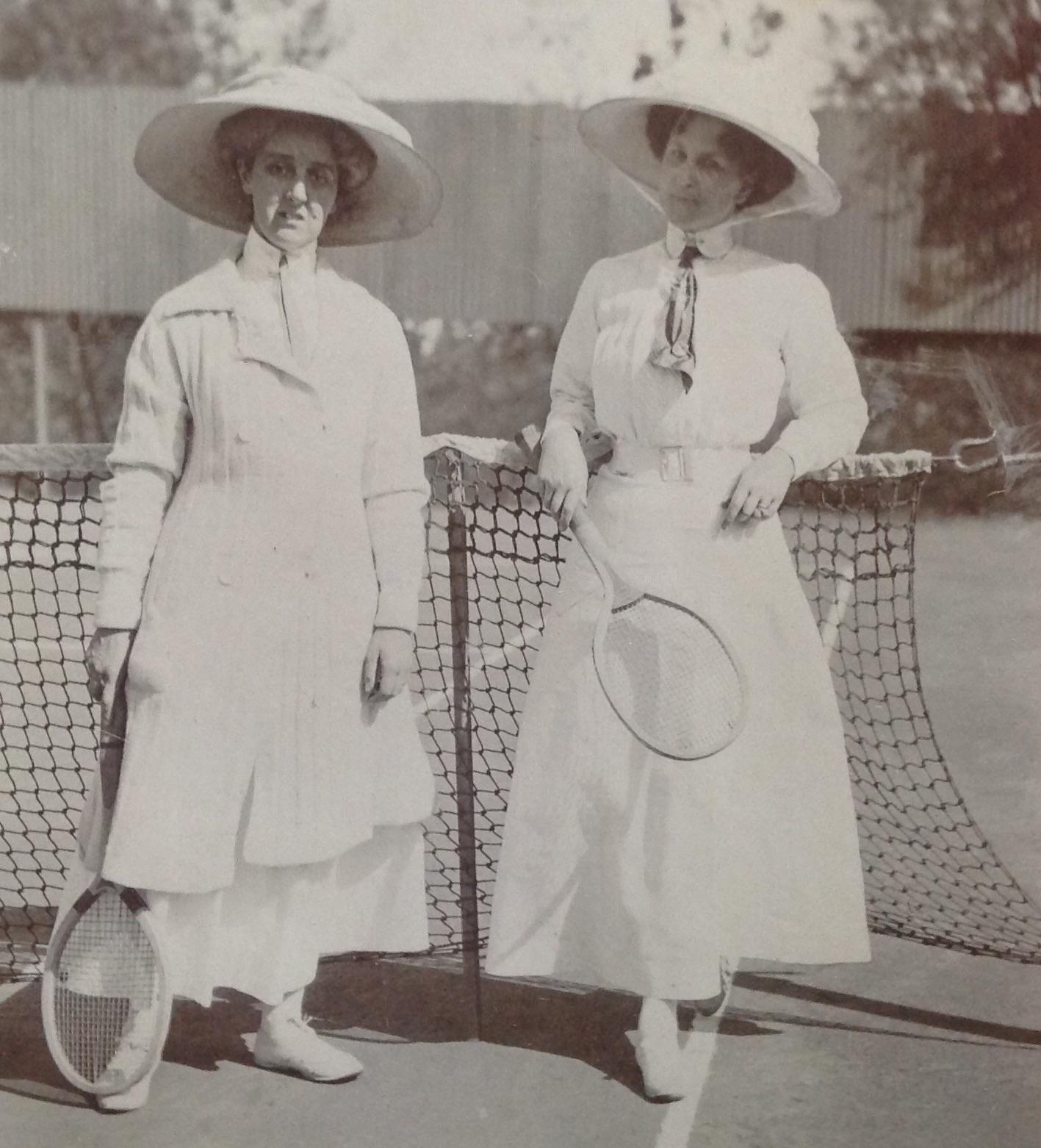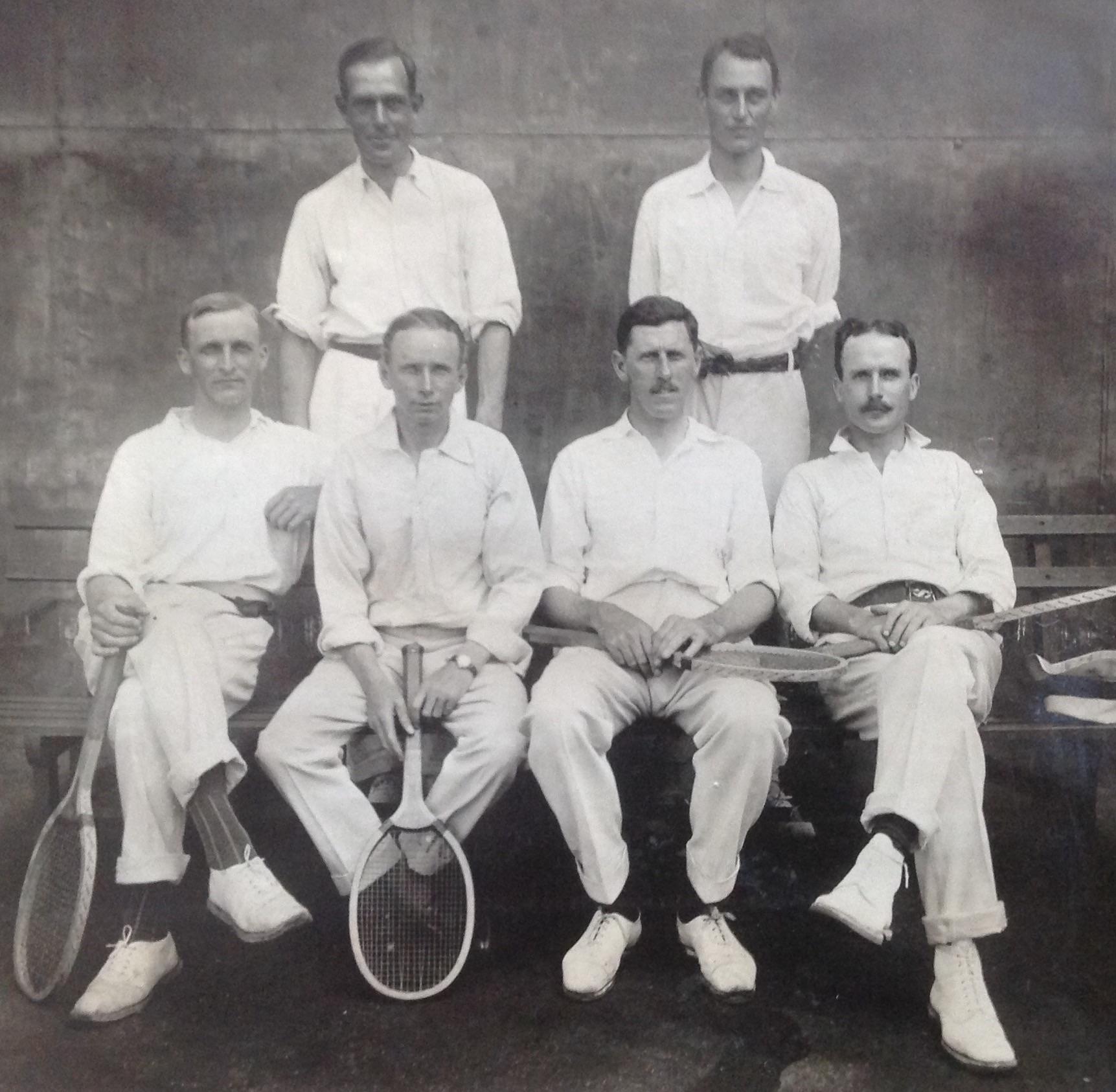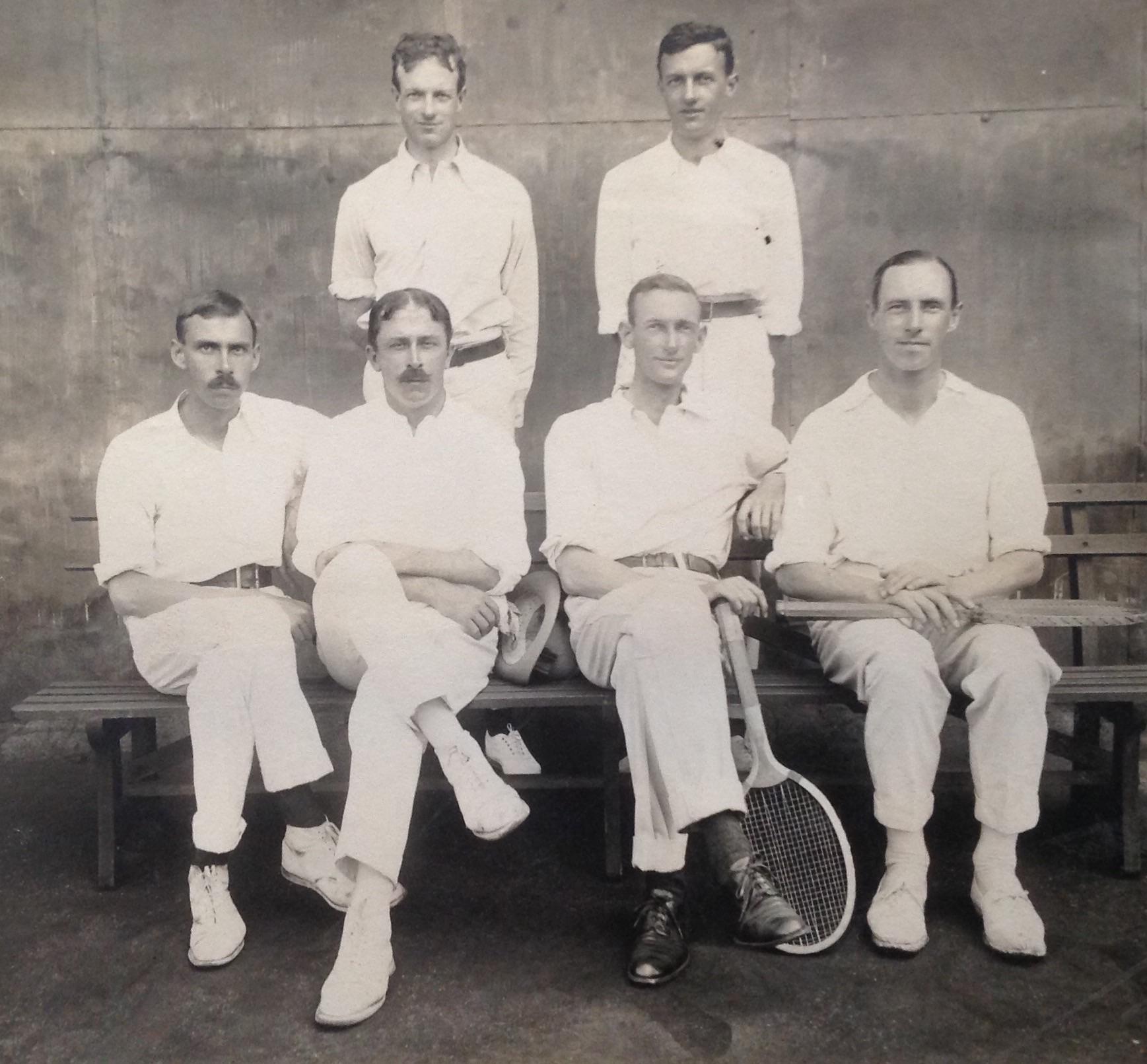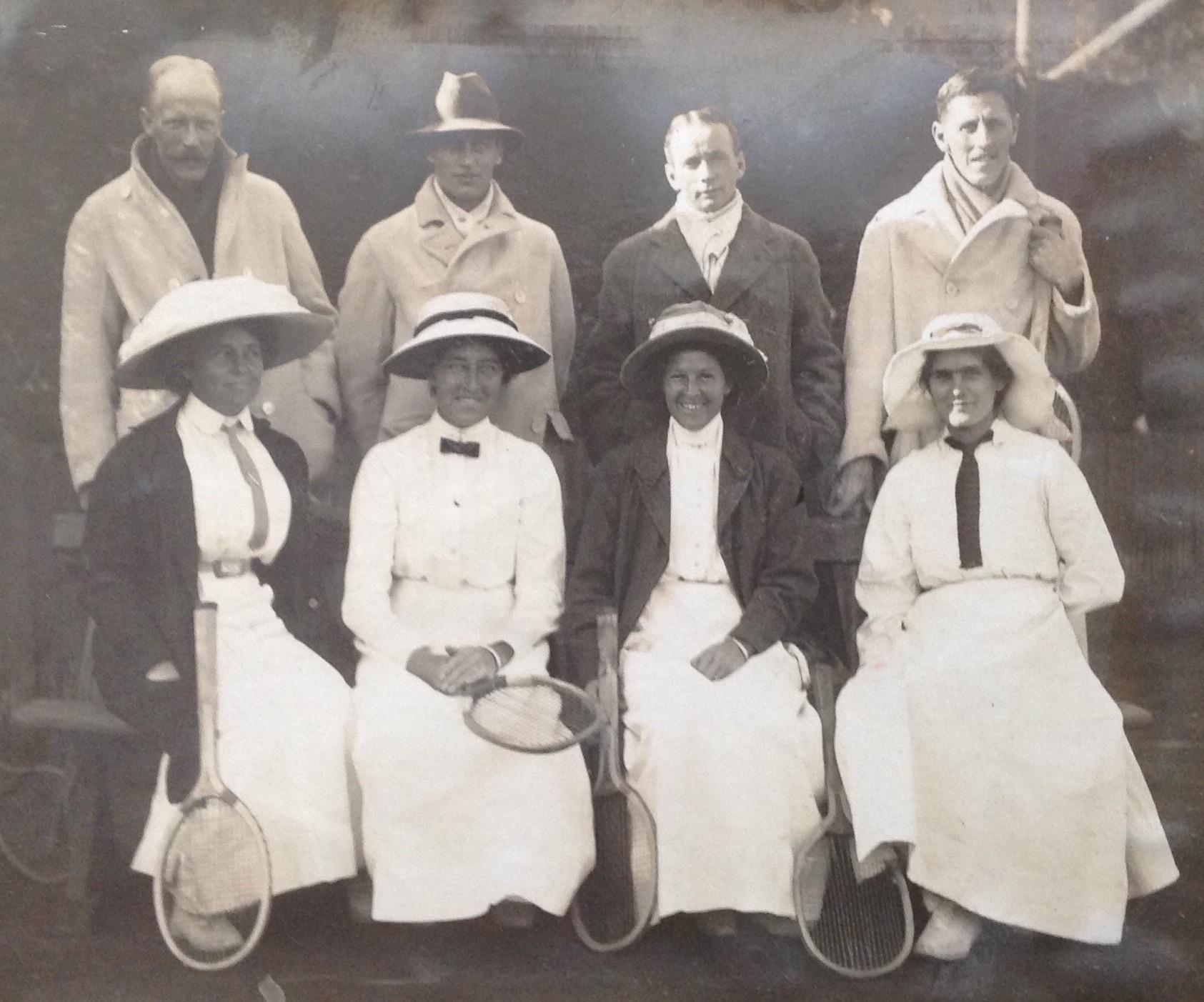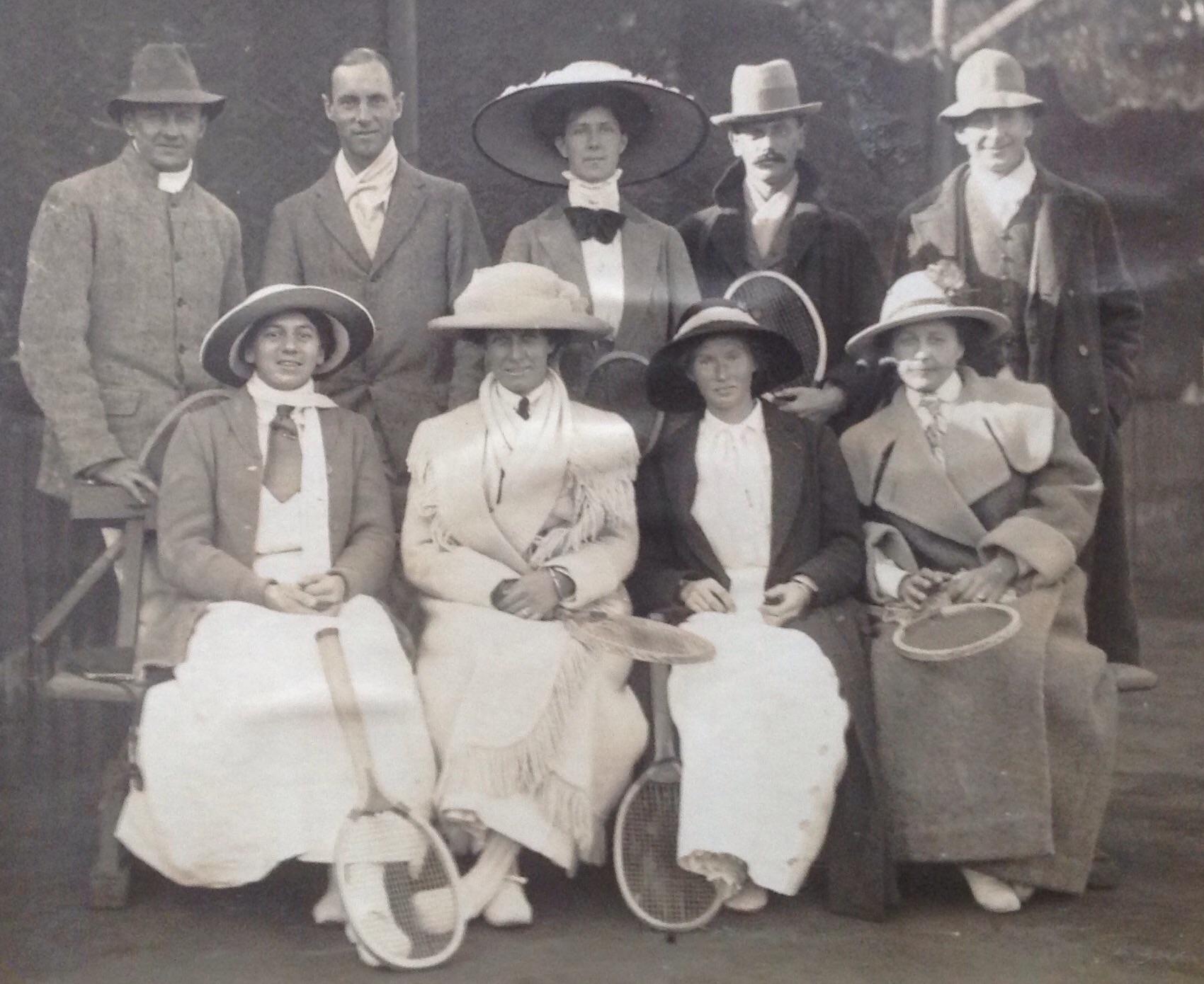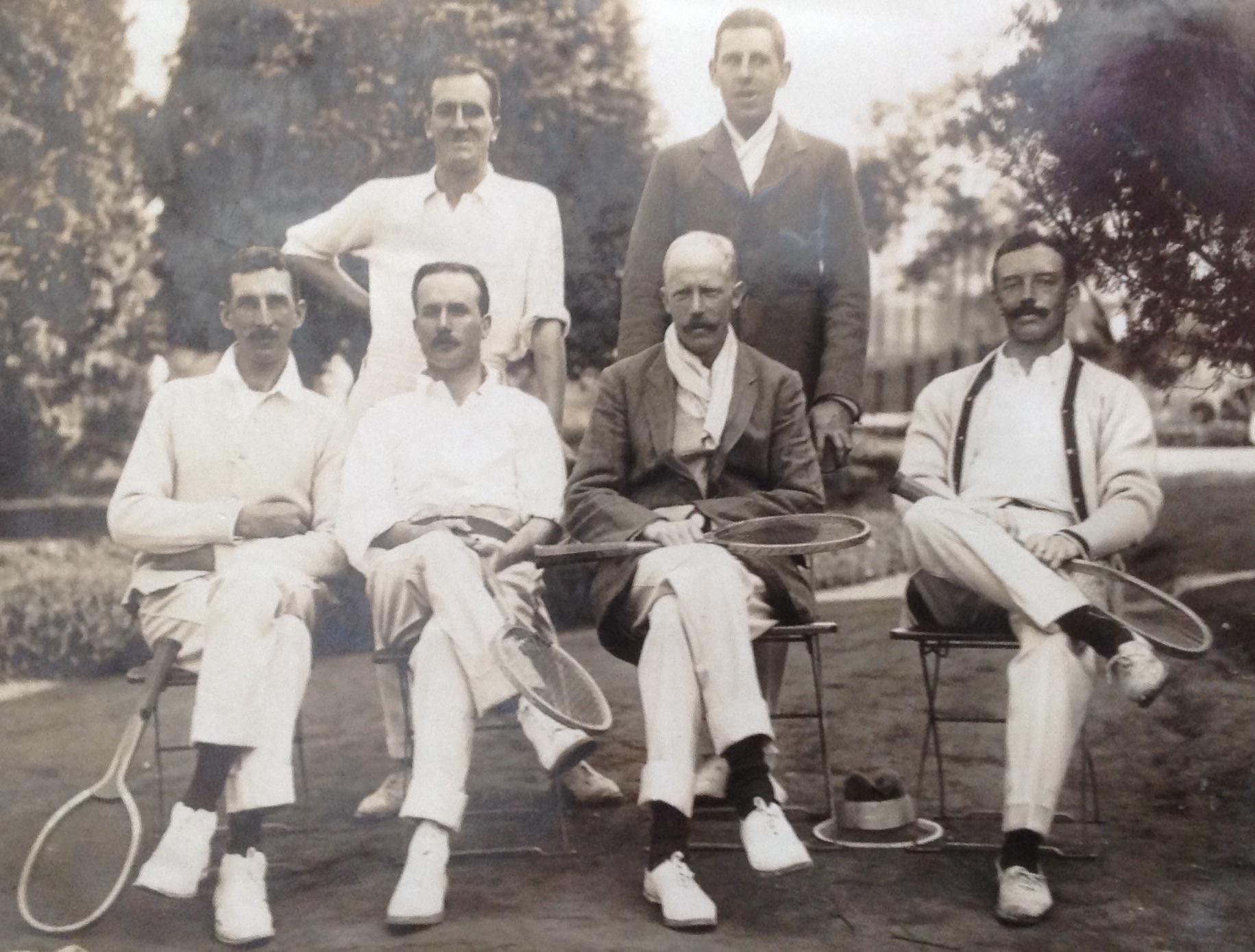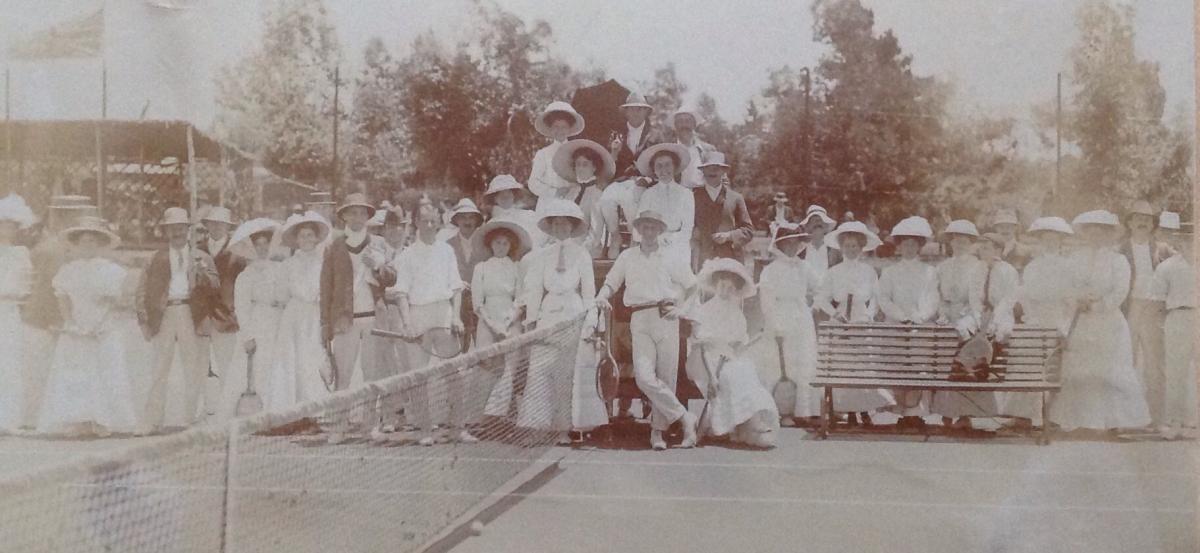
Disclaimer: Any views expressed by individuals and organisations are their own and do not in any way represent the views of The Heritage Portal. If you find any mistakes or historical inaccuracies, please contact the editor.
Always in search of original South African photographic images from before 1915, the author recently acquired several photo albums from this era at a Pretoria based antique fair.
One of these photo album stands out in that the theme is purely tennis-based, spanning over a 4-year period (between 1909 and 1913).
In putting this article together, much photographic cross-referencing had to be done in an attempt to identify and record as many players as possible in that only a few photographs in the album have the names of the players recorded.
Given some of the captions recorded in the album, it is assumed that the owner was female. To date, it could however not be determined beyond reasonable doubt who the album belonged to. The assumption is made that the album may have belonged to an unidentified female player that features most often in the album. The author cautiously suggests that she may have been Miss Raymond.
The “prominent female player” on the left with Charlie Winslow. The second female has not been identified to date
The “prominent female player” in the background. The caption states: “Fair flowers of nature’s own making”. The player standing in front has not been identified
The prominent unidentified female player. It is thought that the album may have belonged to her. She is often seen with Charles Winslow on other images. Although Winslow later married Olive Matthias, the deduction was made that the “prominent lady” is not Matthias, but possibly Miss Raymond
To confuse the matter even further, the front page of the album contains a photograph of a woman, H.B. Hunt with her two children (dated 1910). This image was taken in Abbottabad (India then, Pakistan today). Although she was abroad during the period that the album covers, she may also have been the owner of the album in that there is an inscription that one of the images contained in the album had to be returned to her. It could be that she was either the sister or the wife of a tennis player who kept a photographic record of the game.
Irrespective as to who the owner was, the photographic content indicates that the owner of the album was passionate about the sport and well socialised in the top South African tennis circles.
This red covered album, which consists of 38 pages, contains a cross spectrum of photographic images relating to South African tennis activity over the 4-year period. Only 37 of the 136 images glued into the album have been reproduced for this article. Amongst images of key local players, the album also contains some unexpected images of South African Olympic champions as well as international champions.
Except for a few professional group photographs in the album, the large percentage of the images were captured by amateur photographers.
Although sports photographs of this era are dull at the best of time, they remain a rich source of genealogical information (where the name of the sitter has been included). In order to assist potential future research, all the player names recorded in the album have been captured in this article (either underneath each of the images or at the end of this article).
Tennis was clearly a sport mainly taken up by the well-to-do citizens of the country. Of interest is that all the surnames recorded in the album are of English descent, mostly wealthy English immigrants probably. Typical Afrikaans surnames do not appear in the album.
The main tennis lawn clubs that feature in the photo album are Johannesburg based Rosettenville Club (Nov 1909 & 1910); Berea Club (1910) and Turffontein Club (Dec 1911) as well as the Boksburg based East Rand Propriety Mines (ERPM) club.
A number of images relate to the South African National Championships held in Durban (1912). From these images it is clear that it was not only about tennis. It was a fun outing at the same time in that the album contains a few social photographs of players on the beach or out eating oysters.
What happened on tour, certainly did not remain on tour in that one caption underneath one image states: “I want to sleep with Dug”, which certainly is open to a single interpretation.
Other humorous captions include: “Why so pensive Florence”, “Fair flowers of nature’s own making”; “Duly chaperoned”; “Peek-a-boo (lady behind male player)”; “Talk about swank (female player in action)”; “Charlie behave!”; “Two is company”; “Rose between two thorns”; “the Odal smile”; “Hark, the emerald cuckoo” and “One in a million”.
In two of the images relating to the tournament in Durban, Indian “ball collectors” can be seen in the background of the images.
The Dove’s team – The hand written comment underneath the image is of interest. It is assumed that Charles Winslow, seated front left, is being referred to as the “original and only”. PW Bridges stands in the back row (2nd from right). It is also assumed that the owner of the album is one of the four ladies that appears on the image.
On the beach - Durban tennis tour July 1910. Caption states “Behave Charlie”. Gentleman on the left is Charles Winslow. The lady next to him remains unidentified, but is a prominent figure throughout the album. She is thought to be the owner of the album
On the beach – Durban tennis tour July 1910. Comment underneath image states: “Two is company” suggesting that three is a crowd – So who was the unwelcome individual in the image? Probably the male on the right. Charlie Winslow stands on the left. The lady, the prominent figure throughout the album, may be the owner of the photo album
Durban tennis tour July 1910 – Enjoying Oysters at the Bluff. Charlie Winslow seated on the left with the prominent female figure of the photograph album on his left
“A Rose between the thorns” with a heart underneath. From her look it can be seen who she favoured (PW Bridges standing on the right). Both these male players also appear in the photograph taken with Lord Gladstone (see lower down)
The same three parties as in the image above posing with fellow tennis players. Image contains an interesting caption underneath “Not this!” – Probably because she is not seated next to the male player (PW Bridges) she favours
Miss V Millar & Mrs Johnstone Brown in their tennis gear. Considering the bulky tennis attire at the time, the game must have been much slower compared to today’s standards
South African Tennis History
The earliest account of "actual play" in South Africa has been traced back to Sir Garnet Wolsely's game at Rondebosch, Cape Town, during 1875.
Sir Garnet went on to fill his Government appointment in Natal where he continued playing a men's four regularly every afternoon. It was not considered a game for ladies at that time, but Mrs Janet Mary Hackland took the game to Richmond in Natal in 1876.
With her drive and persistence, she laid out a court and formed a club in which women could participate. Thus, Richmond Club, for many years, was the oldest lawn tennis club in South Africa with the Port Elizabeth Lawn Tennis Club (PELTC) coming a close second.
Due to the Richmond Club no longer being in operation, the PELTC today has the honour of being the oldest active tennis club in South Africa and is still located where it all started in St George's Park.
The South African Open – formerly known as the South African Championships, Grand Prix Tennis Tour, World Championship Series, ATP Tour and Virginia Slims Circuit affiliated tennis tournament were played between 1891 and 2011 in South Africa.
The first South African Championships were played in 1891. This tournament was held at and organized by the Port Elizabeth Lawn Tennis Club. The first winners at this championship were Lionel Richardson (men’s single) and Mabel Grant (females single).
This inaugural edition also consisted of men's doubles and mixed doubles event. The tournament was not played between 1900 to 1902 due to the Boer War. After the formation of the South African Lawn Tennis Union in 1903, the location of the tournament circulated between Johannesburg, Cape Town, Durban, Port Elizabeth, East London, Bloemfontein, Kimberly and Pretoria. During 1905 the women's doubles competition was added. Due to the two world wars, the tournament again did not take place between 1915 to 1919 and 1941 to 1945 respectively.
The Port Elizabeth Lawn Tennis Club (PELTC) was started by a group of gentlemen who held a meeting at the Grey Institute on Monday, September 1, 1879.
On Saturday, the same week, the Port Elizabeth Advertiser carried a notice headed "Lawn Tennis" advised "members . . . that the club ground would open for practise" on that afternoon.
Between the years 1879 and 1891 lawn tennis news only appeared in the column headed "Local & General," but once the importance of the game became evident through the South African Championship Tournament, the game was given prominence in a separate column in the newspapers.
Unknown finalists – Mixed Doubles Tournament – Rosettenville LTC 9 Nov 1909
2nd Test match. South Africa vs AW Myers team 1911. Arthur Wallis Myers, assumed to be the gentleman in the striped jacket standing at the back, was the English tennis captain. Myers was also a leading tennis journalist and author. Lord and Lady Gladstone are seated in the centre. Herbert John Gladstone (1st Viscount Gladstone) (7 January 1854 – 6 March 1930) was a British Liberal statesman and Home Secretary (1905 to 1910) and Governor-General of the Union of South Africa (1910 – 1914). He was married to Dorothy Mary Paget (1876–1953). Bottom left is Harry Kitson and back right is RF le Sueur. The gentleman standing in the middle at the back (PW Bridges) and the one seated in the front on the right also appear together in other images contained in this article
Berea Club tournament participants (1910)
A full pavilion – Crowd watching 2nd Test match at Wanderers (31 December 1910). Do local tennis tournaments still attract this type of attendance? What stands out in this image? Not a single attendee is on their cellphone!
Cinquevalli (Natal Champion) – Circa 1910
South Africa at the Olympics – 1912
One image that stands out is the photograph of four men on a ship, en route to the 1912 Olympics.
The inscription states: “The prophetic snap”. The photograph was allegedly taken on their way to Europe. Later it turned out that all four won gold!
The Union of South Africa competed at the 1912 Summer Olympics in Stockholm, Sweden. Twenty-one competitors, all men, took part in 21 events in 6 different sports.
The gold medal winners were:
- Ken McArthur — Athletics, Men's Marathon
- Rudolph Lewis — Cycling – South Africa’s first cycling medal
- Harold Kitson and Charles Winslow — Tennis, Men's doubles outdoor
- Charles Winslow — Tennis, Men's singles outdoor
Selected sports team en route to the 1912 Olympics Games held in Sweden. The photograph is titled “The prophetic snap” – probably so titled in that all four men in the image returned with Gold medals. McArthur (Gold medalist - Athletics), Lewis (Gold medalist – Cycling), Winslow (Gold medalist - Tennis) and Kitson (Gold medalist - Tennis).
About the two tennis gold medallists:
- Harry Austin Kitson (17 June 1874 – 30 November 1951)
Kitson won the South African Championships in 1905, 1908, 1911 and 1913 and was runner–up in 1909 and 1910 to respectively Reginald Doherty and Anthony Wilding.
Kitson also competed in the singles and doubles events at the 1908 Summer Olympics in London but was more successful at the 1912 Summer Olympics in Stockholm during which he won the gold medal in the men's doubles event with his doubles partner Charles Lindhurst Winslow. In the men's singles tournament of the same year he won a silver medal after losing in the final to his doubles partner Winslow.
- Charles Lyndhurst Winslow (1 August 1888 – 15 September 1963)
Born near Queenstown (Eastern Cape), Winslow became a three-time Olympic tennis medallist for South Africa. He not only won the two Gold medals at the 1912 Summer Olympics, but also a bronze medal in the men’s single event eight years later in Antwerp (1920). He was also the South African singles champion during 1914.
Winslow came from an athletic family, as his father, Lyndhurst Winslow was not only a runner-up during the 1891 tennis tournament but also a top-level cricketer for Sussex County Cricket Club.
Charles’s son, Paul, in turn played cricket for South Africa between 1949-55.
Other tennis personalities identified
- AF Wilding
Anthony Frederick Wilding (31 October 1883 – 9 May 1915) was a New Zealand world number 1 tennis player and soldier who was killed in action during World War I. He is considered to be the world's first tennis superstar, and the only New Zealand player to have won a Grand Slam singles title. Wilding was the son of wealthy English immigrants to Christchurch, New Zealand and enjoyed the use of private tennis courts at their home. He obtained a legal education at Trinity College, Cambridge and briefly joined his father's law firm. Wilding also was a first-class cricketer and a keen motorcycle enthusiast. His tennis career started with him winning the Canterbury Championships aged 17. He developed into a leading tennis player in the world during 1909–1914.
Wilding won the Davis Cup four times playing for Australasia, and won a bronze medal at the indoor singles tennis event of the 1912 Olympics which made him the first and to date only player from New Zealand to win an Olympic medal in tennis in the Summer Olympics.
The album also contains some additional amateurish photographic images of Wilding in action on a local tennis court.
AF Wilding – New Zealand Tennis champion on South African soil participating in a local tournament (Circa 1910)
- John Richardson
Reverend John R. Richardson (born 24 June 1873 in Madagascar) was the 1906 South African tennis champion. He also competed in the men's singles event at the 1908 Summer Olympics.
Rev John Richardson (ex-champion)
- Phyllis Carr
Phyllis Helen Satterthwaite (born Carr; 26 January 1886 – 20 January 1962) was a female tennis player from Great Britain who was active between the early 1910s and late 1930s. She participated for the first time in Wimbledon championships during 1911.
She married Clement Richard Satterthwaite on 13 April 1912. Satterthwaite lived in London with her husband until April 1923 when she divorced and moved to Cannes where she resided on the French Riviera. She wrote tennis reports to magazines for a living.
PW Bridges & Miss Phyllis Carr. Carr was an English tennis player. She married Clement Satterthwaite. Bridges appears in an number of other images contained in this article
- Frank Eardley Cochran
Son of John and Mary Kate Cochran, of Melbourne, Frank served in the Boer War 1899-1901 with the 3rd Victorian (Bushmen's) Contingent. It has been suggested that he also fought with the Natal Light Horse during the campaign in German South West Africa prior to his appointment as Lieutenant in the 2nd South African Infantry in September 1915. Promoted with regular intervals, he was appointed temporary Captain in May 1916 and temporary Major in April 1917. He assumed the temporary command of the 2nd South African Infantry during August 1917 followed by the 3rd South African Infantry during October 1917. Attached to the Military Headquarters during November 1917, he was appointed to Brigade Major.
Aged 36, he was killed in action in the Battle of Marrières Wood on 24 March 1918.
Finalists Wit Cup 1910. Winner was FE Cochran (on the left). It is assumed to be Charlie Winslow standing on the right
Wit Cup Finalists (1912). FE Cochran (left) as the winner and GH Dodd the runner-up
- George Henry Dodd
George Henry Dodd (16 January 1882 – 21 July 1957) was the son of Douglas William Dodd, a Minister of Religion in the Anglican Church from Eton, Buckinghamshire, and Elizabeth Saffrona (née Pruen). He competed for South Africa in the tennis event at the 1920 Summer Olympics where he took part in the men's singles and doubles event.
George won the 1912 men's singles title at the South African Championships, defeating R.F. Le Sueur in the final in five sets. In addition, he was runner-up on five occasions (1914, 1922, 1925, 1928, 1929).
George was married three times. His first marriage was to Grace Lilian Floquet (1887-1959) at St. Mary's Anglican Church in Pretoria on 10 August 1906. They divorced at Johannesburg on 25 January 1921. His second marriage was to Ann Catherine Boshoff; they were married at the Johannesburg Magistrate's Office on 1 October 1921. This marriage also ended up in a divorce on 26 October 1933. George's third and final marriage was to Agnes Ruth Joy Sackville-West (1903-1969), granddaughter of Lionel Sackville-West, 2nd Baron Sackville on 15 October 1938 in Johannesburg. They were married until his death in Durban on 21 July 1957 (aged 74).
South African Championship winners (Durban 1912). Left RF le Sueur (winner) and runner-up, Geo H. Dodd
Another Final (This time with Geo Dodd on left as winner and RF le Sueur as runner up)
- HA Kirby
It has been suggested that Mrs H. (A.) Kirby is the former Amy Wilson, who had some success at British tournaments under both her maiden and married names. She married Arthur Kirby.
Mostly listed as Mrs HA Kirby, Amy Wilson Kirby is recorded to have won the most female singles tournaments (1904-1907, 1910, 1912), usually recorded under Mrs HA Kirby.
A ladies final – Clearly during winter. Winner was Mrs HA Kirby (on the right) with runner-up Olive Mathias – Olive later married Charles Winslow
- Olive Mathias
Born during 1892, Olive married Charles Winslow at the age of 23 on 24 May 1915. Charles was one of South Africa’s 1912 Summer Olympic Gold medallists (See above). She passed away during 1951. Their son, Paul Winslow (21 May 1929 - 24 May 2011) became a South African test cricketer.
Olive participated in the South African Championships as early as 1912. She won the title in 1914 and again in 1920 as Mrs. Winslow. She also competed in events in Europe during 1920 while on tour with her husband.
Mixed doubles finals: Cochran and Olive Mathias (winners) with Watson and Miss Stevens as runners-up. Considering Miss Stevens facial expression (dressed in black), she seems to have been a sore loser
Wanderers versus ERPM women’s doubles leagues (1913). Winning team was Wanderers. Back from left to right – Mrs Ransome; Mrs Bowyer; Mrs Ashton; Mrs Lishman; Miss Raymond; Mrs Hurd & Mrs Lamb. Front from left to right: Miss Mathias; Mesduno (?); Washington; Hall; Melvill and Ausch. A 7th front row sitter, on the right, may have vacated her seat. She is named as Stevenson. It is assumed that Miss Raymond (3rd from the right in the back row) may be the “prominent female figure” that appears in many other images contained in the photo album
Other names recorded in album
The names below have also been captured in the album and do not appear in the images reproduced for this article.
- South African players:
Adcock, TJ & JJ Allison, AE Beamish, Madge Bell, Gus Deal, CP Dixon, Miss Dyer (Finalists Girls event), AH Langton, Mrs. CR Leach, Miss Louw, FG Lowe, Mason, McLoughlin, Miss V Millar, RB Powell, CD Robinson, Mrs Rouillard, HW Sevenoakes, Miss Stanton, Miss M Tudhope, B van Ryn, Miss Veale & Mrs GW Washington.
Girls finalist Miss Ellis (unknown tournament)
H Eley – Junior Champion of Natal. The tent in the background confirms the nature of accommodation used whilst on tour.
- English touring team (1911 – 12)
Miss M Coles; AD Pebbles; Miss EG Johnson; Miss DP Boothby
British team member, SN Doust, in action during the 1911/12 South African tournament
Snippets on other sports history in South Africa
- Soccer: Savages Football Club of Pietermaritzburg is oldest football club in South Africa. Records indicate that Savages was active as early as 1882 when a match was played between the school and Savages during August 1882. Savages won the match 3-1.
- Rugby: Hamilton Rugby Football Club was founded in March 1875 in Cape Town. Hamilton RFC played in the first official match at Newlands Stadium on 31 May 1890.
- Cricket: All the small towns in the Eastern Cape had cricket clubs. The oldest clubs in South Africa are the Sidbury Cricket Club (founded 11 May 1843) and the Port Elizabeth Cricket Club (founded January 1859). The Standard Cricket Club in Cradock also dates back to those years. Grahamstown also had a cricket club known as the Grahamstown Cricket Club.
- Cycling: Bicycle races were held in South Africa some years before Dunlop invented the pneumatic tyre (which was patented during 1888). The first cycling club in Southern Africa, the Port Elizabeth Bicycle club was founded during October 1881, whilst the South African Amateur Cycling Union was founded in 1892 in Johannesburg. The first South African championships were decided in Johannesburg on 9 September 1893.
Two unknown female tournament participants. They seem to have been runners-up in the Berea Annual doubles tournament held during 1912
Johannesburg versus Pretoria intertown match (16 December 1912). Seated first from right is Dodd with Kitson on his right
Johannesburg versus Pretoria intertown match (16 December 1912). Back from left, B King & CJ Cunning. Front from left RF le Sueur; Scholtz; CR Leach and SL Taylor-Taswell
Unknown mixed doubles participants. Standing and seated on the right are Kitson and Matthias
Unknown tournament participants
Interclub championship competition 1913 – First league winners (Berea). Dodd is seated second from left
Interclub championship competition 1913 – Runners-up (Roodepoort)
Main picture: Rosettenville Tennis Club - 1909
About the author: Carol is passionate about South African Photographica – anything and everything to do with the history of photography. He not only collects anything relating to photography, but also extensively conducts research in this field. He has published a variety of articles on this topic and assisted a publisher and fellow researchers in the field. Of particular interest to Carol are historical South African photographs. He is conducting research on South African based photographers from before 1910. Carol has one of the largest private photographic collections in South Africa.
Sources
- Cochran, F.E. (Southafricanwargraves.org)
- Coulter, J. and Markham, I. (extracted during May 2019). Port Elizabeth Lawn Tennis - St. Georges Park. (stgeorgespark.nmmu.ac.za).
- Dodd, George (Wikipedia.org)
- Football-Savages (brandsouthafrica.com)
- Gladstone, Herbert (Wikipedia.org)
- Hardijzer Photographic Research Collection
- Hamilton RFC - Sea Point (Wikipedia.org)
- Kitson, Harold (Wikipedia.org)
- Markham, I. (extracted May 2019). Bedford cricket Club & Mill cricket ground – St. Georges Park. (stgeorgespark.nmmu.ac.za)
- Mathias, Olive (tennisforum.com)
- Myers, A.W. (Wikipedia.org)
- Richardson, John (Wikipedia.org)
- Satterthwaite, Phyllis (Wikipedia.org)
- South African open tennis (Wikipedia.org)
- South Africa at the 1912 Summer Olympics (Wikipedia.org)
- The oldest tennis club in South Africa (by Port Elizabethan – 2017 - mype.co.za)
- Wilding, Anthony (Wikipedia.org)
- Winslow, Charles (Wikipedia.org)
Comments will load below. If for any reason none appear click here for some troubleshooting tips. If you would like to post a comment and need instructions click here.

